The Outer Hebrides
The Outer Hebrides, also known as The Western Isles, is an island chain off the north west coast of Scotland. They are made up of more than 70 islands, of which only 15 are inhabited.
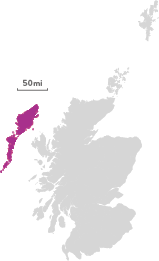
Population: 26,120
Five fascinating facts
| 1. Despite its latitude, the Gulf Stream dominates the climate, meaning the region is comparatively mild |
| 2. The Callanish Stones, dating from about 2900 BC, are the finest example of a stone circle in Scotland |
| 3. The Butt of Lewis has been recorded as being the UK’s windiest spot |
| 4. The Outer Hebrides is home to more than 7,500 fresh water lochs, which is almost a quarter of all the lochs in Scotland |
| 5. The waters around Lewis were believed to be home to a water-spirit, or ‘Kelpie’, called Seonaidh, who could only be pacified by throwing a cup of beer into the sea |
Education
The Outer Hebrides has a close knit community of schools. Western Isles Council is responsible for four secondary schools across the islands: the Nicolson Institute in Stornoway (around 1,000 students), Sir E Scott School in Tarbert ( approx. 187 students), Sgoil Lionacleit in Benbecula (approx. 256 students) and Castlebay in Barra (approx. 52 students).
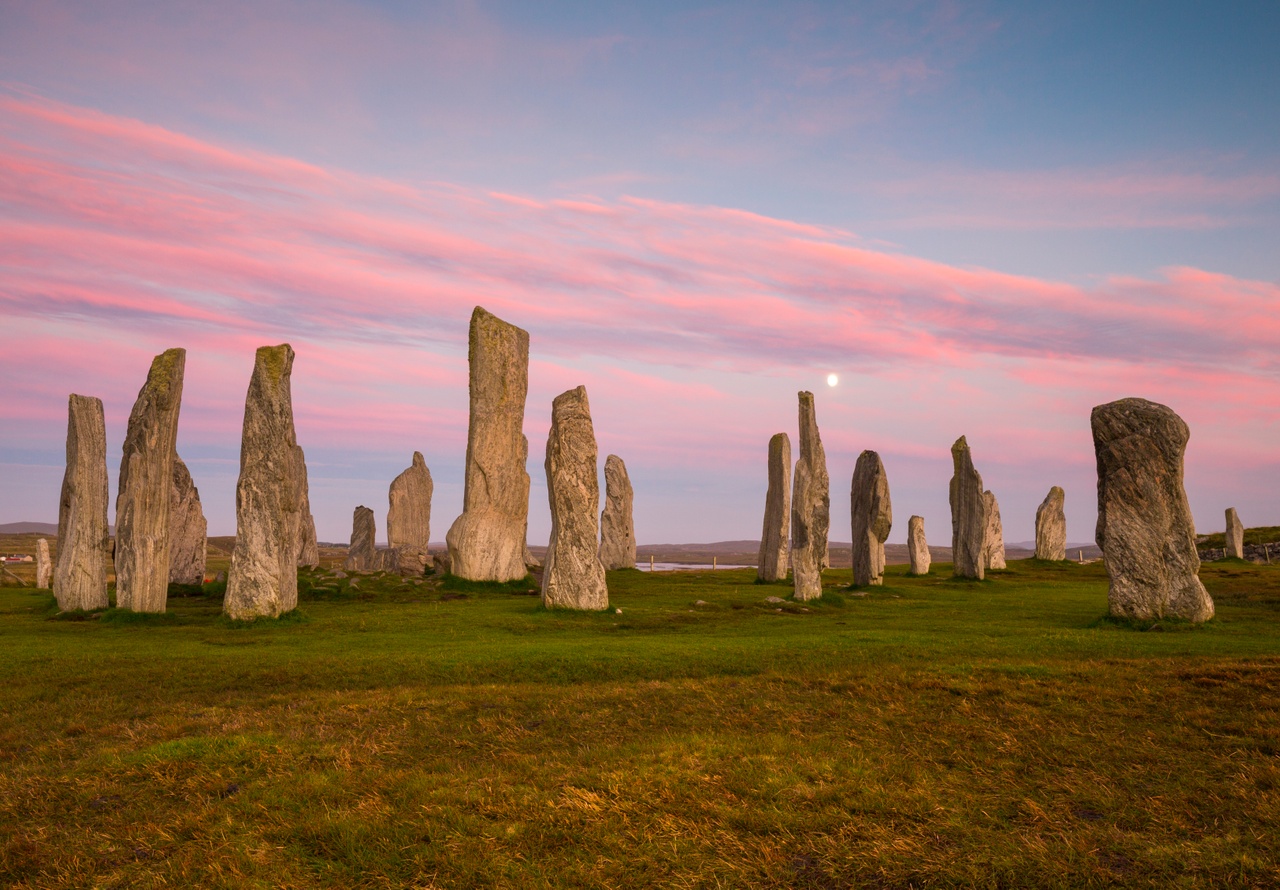
Scottish Gaelic is still a predominantly spoken language in the Outer Hebrides, with more than 50% of the population fluent in the language. Because of this, there are six primary schools where lessons are taught in both English and Gaelic. Bernera, Breasclete, Castlebay, Lochdar, Leverhulme Memorial and Sgoil an Taobh Siar have Gaelic Schools Status.
Find out more about the school system in Scotland
Find out more about universities in Scotland
Local industries
Tourism is by far and away the mainstay industry in this region. It generates £65m in economic value for the islands, sustaining around 1000 jobs and is one of the key growth sectors in the islands’ economy. The islands receive 219,000 visitors per year; 930 accommodation providers are directly supported by tourism, and hundreds of other businesses depend on the visitor economy.
Other commercial activities centre on crofting, fishing and weaving which includes the manufacture of Harris Tweed and the area offers potential in renewable energy generation. Over two thirds of the island population now live on community-owned estates.
Find out more about working in Scotland
Transport
The chain of islands span just over 150 miles, including 12 that are inhabited, stretching from Vatersay in the south to Lewis in the north. Each island is connected by a causeway, bridge or ferry making the journey through the islands a truly unique experience.
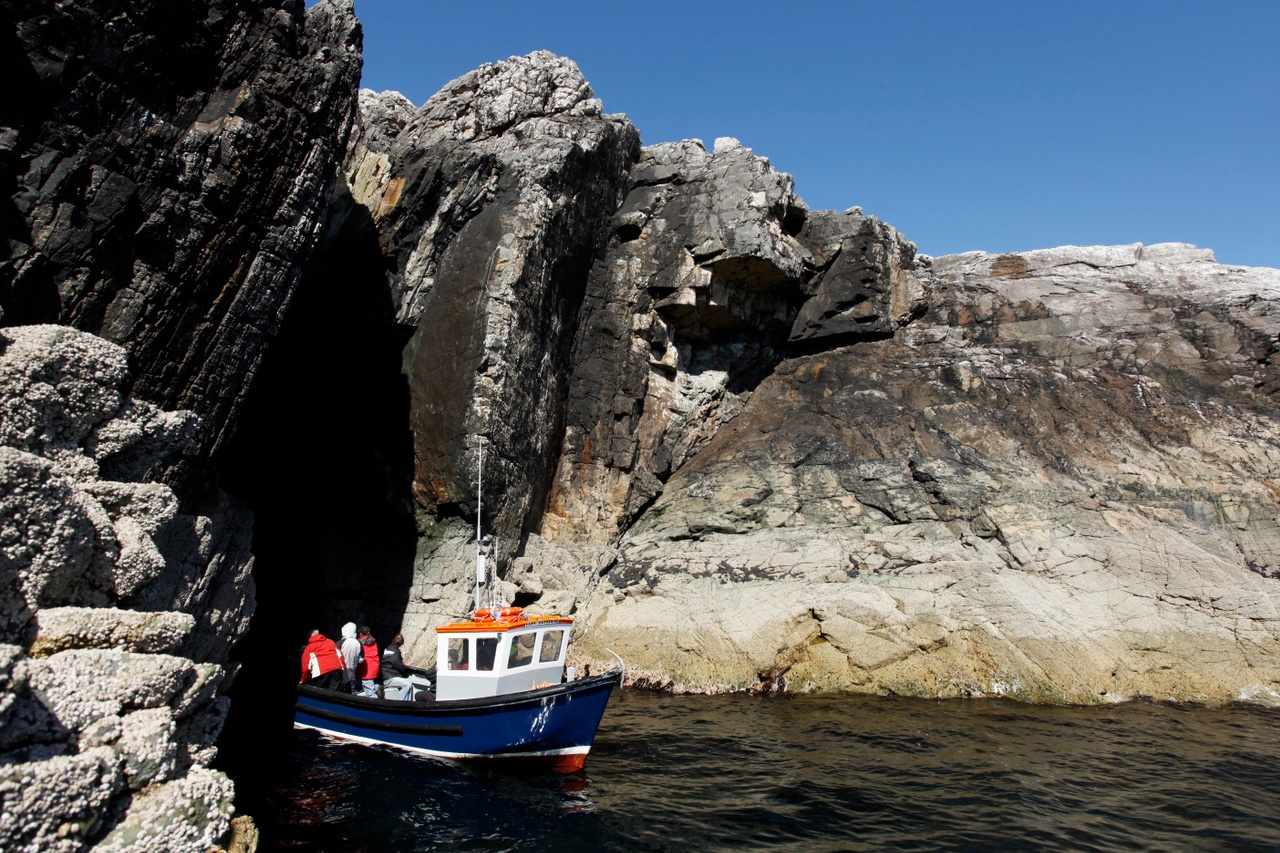
Travelling around Outer Hebrides can be achieved by driving, cycling or using public transport, and the islands are connected to the mainland by plane and ferry. The islands are more accessible than ever, with five UK airports reaching Stornoway (Lewis), Benbecula and Barra.
The outdoors
Whether you enjoy sea-based activities, are much more comfortable on dry land, or prefer to get up into the mountains, the Outer Hebrides offer something for everyone. Fast and fun downhill mountain biking might be your thing – or exploring one of Scotland’s most incredible long-distance trails, the Hebridean Way.
Surrounded by stunning coastline, the opportunities for activities are endless. Think kayaking, surfing, kite surfing, wild swimming, sea life cruises, horse riding and even snorkelling with seals.
Offering breath-taking landscapes and ever-changing scenery, the islands are the perfect retreat for any outdoors enthusiast.
Leisure
The islands’ natural playground provides so much to absorb any adventurous visitor. In the colder, darker and less weather-friendly winter months, numerous pubs and hotels provide a warm welcome.
The Lewis Sports Centre has a 25m pool with a movable floor, plus a children’s pool, featuring, Nessie the Friendly Monster, and a climbing wall, sports halls, running track and a soft play area. Likewise, the Isle of Harris Sports Centre has a 16.5m swimming pool, and a children’s pool with fountains and a waterfall, sauna/spa and gym.
Find out more about the outdoors and leisure on VisitScotland.com
Accommodation
Homes and housing in the Outer Hebrides are a wide selection of flats, houses and countryside cottages – many of the latter are used for crofting.
Western Isles Council aims to fill hundreds of empty homes under the Scottish Empty Homes Partnership (SEHP), with the remaining cost to be covered by income from council tax on second homes. Official figures show there are 522 long-term empty properties in private ownership in the Outer Hebrides.
The Shetland Islands
Lying roughly 100 miles off the north east coast of Scotland, the Shetland Islands are the northern-most tip of Scotland. The islands separate the Atlantic Ocean, on the west, from the North Sea on the east.
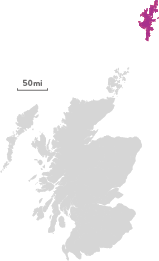
Population: 23,020
Five fascinating facts
| 1. Shetland belonged to Denmark until 1469, when Princess Margaret of Denmark married James III of Scotland – the Islands were part of her dowry |
| 2. The Islands played a secret role in WWII, when ordinary fishing boats formed the ‘Shetland Bus’ – transporting munitions, supplies, and even rescuing refugees |
| 3. Shetland boasts an ancient civilisation that predates the Vikings and the Picts, with Neolithic archaeological sites which date back to 2500 BC |
| 4. The Shetland Isles are located around 160 km (99 miles) closer to Norway than they are to Edinburgh |
| 5. At the height of summer, the sun barely sets – aside from a few hours of twilight which Shetlanders refer to as the ‘Simmer Dim’ |
Education
Childhood education is well catered for in Shetland. There are 21 primary and seven secondary schools spread across the islands. The most recent addition is Anderson High School in Lerwick which opened in 2017. The five-storey building has a capacity for almost 1,200 pupils and contains a halls of residence to provide accommodation for those traveling from Shetland’s farthest islands.
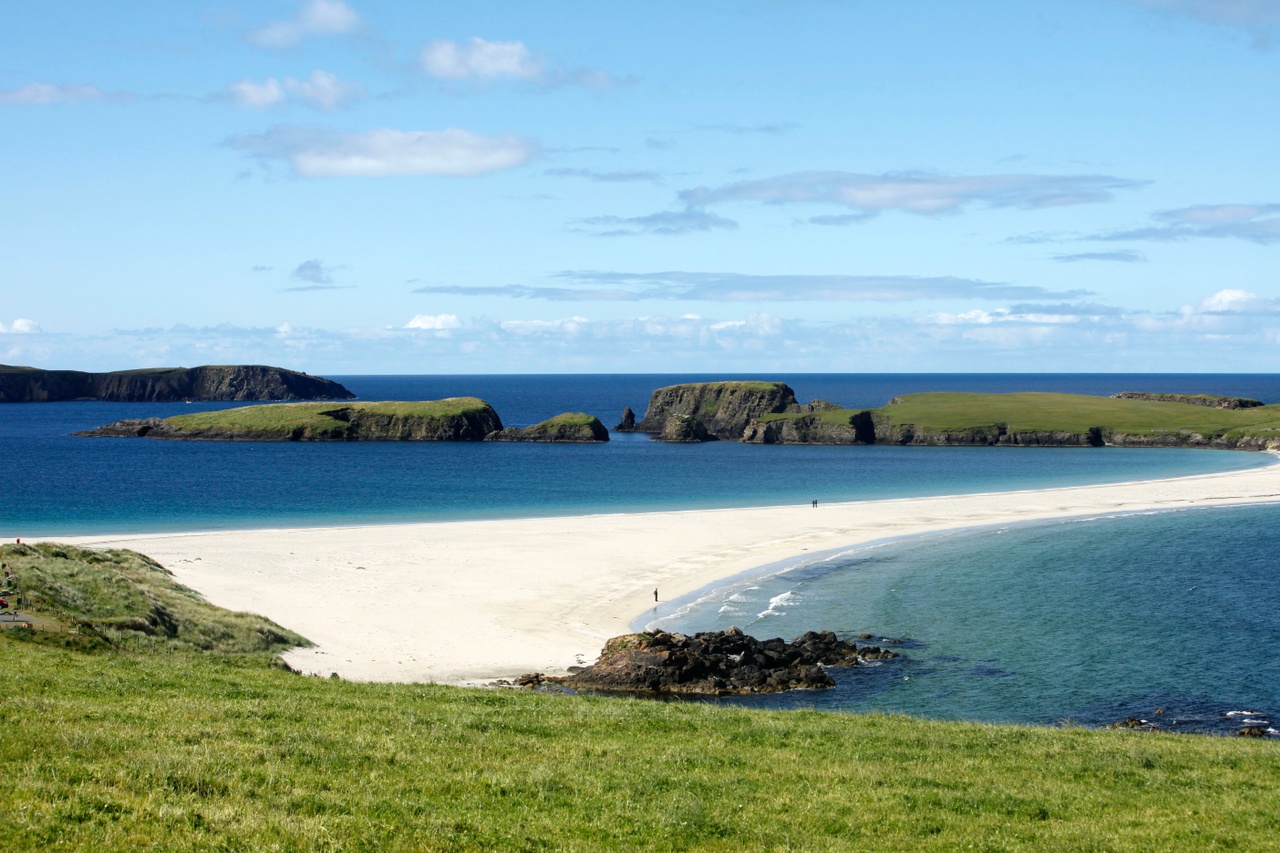
Further and higher education is available from Shetland College, a partner of the University of the Highlands and Islands (UHI). Students can choose courses ranging from National Certificate (HNC) qualifications to post-graduate degrees. Aside from the main Gremista campus in Lerwick, there are learning centres located in the North Isles, Whalsay, and the North Mainland.
Find out more about the school system in Scotland
Find out more about universities in Scotland
Local industries
Seafood has been the cornerstone of Shetland’s economy for centuries and it’s still the largest sector by far, with 60,000 tonnes of herring and mackerel landed annually. Fish farming also continues to go from strength to strength, with around 25,000 tonnes of salmon, mussels and other shellfish produced each year. Despite the downturn in North Sea oil production, investment in the oil and gas sector continues unabated, with plans underway to expand and upgrade existing infrastructure at Sullom Voe oil and gas terminal.
Shetland’s unique climate and terrain has also yielded many small-scale but profitable food and drink, and textile industries. Its rugged landscape is ideal for rearing livestock, in particular Sheep, which thrive off its nutritious vegetation. These free-roaming flocks provide a bountiful supply of exceptionally soft wool used by local weavers to create Shetland’s world-famous Fair Isle patterned knitwear, not to mention remarkably tender and sweetly flavoured lamb.
Find out more about working in Scotland
Transport
Getting around Shetland is easy. There are 640 miles of quiet, well-maintained roads which make travelling by car simple. If visiting, there are a number of car and bike hire options available, as well as taxi firms. Mainland Shetland and the larger islands are well served by bus operators including the Zetland Transport Partnership and others.
Inter-island ferries connect the surrounding islands to the Shetland mainland, allowing you to drive on and off with your vehicle, while the smaller isles are served by an eight seater Islander plane from Tingwall airport.
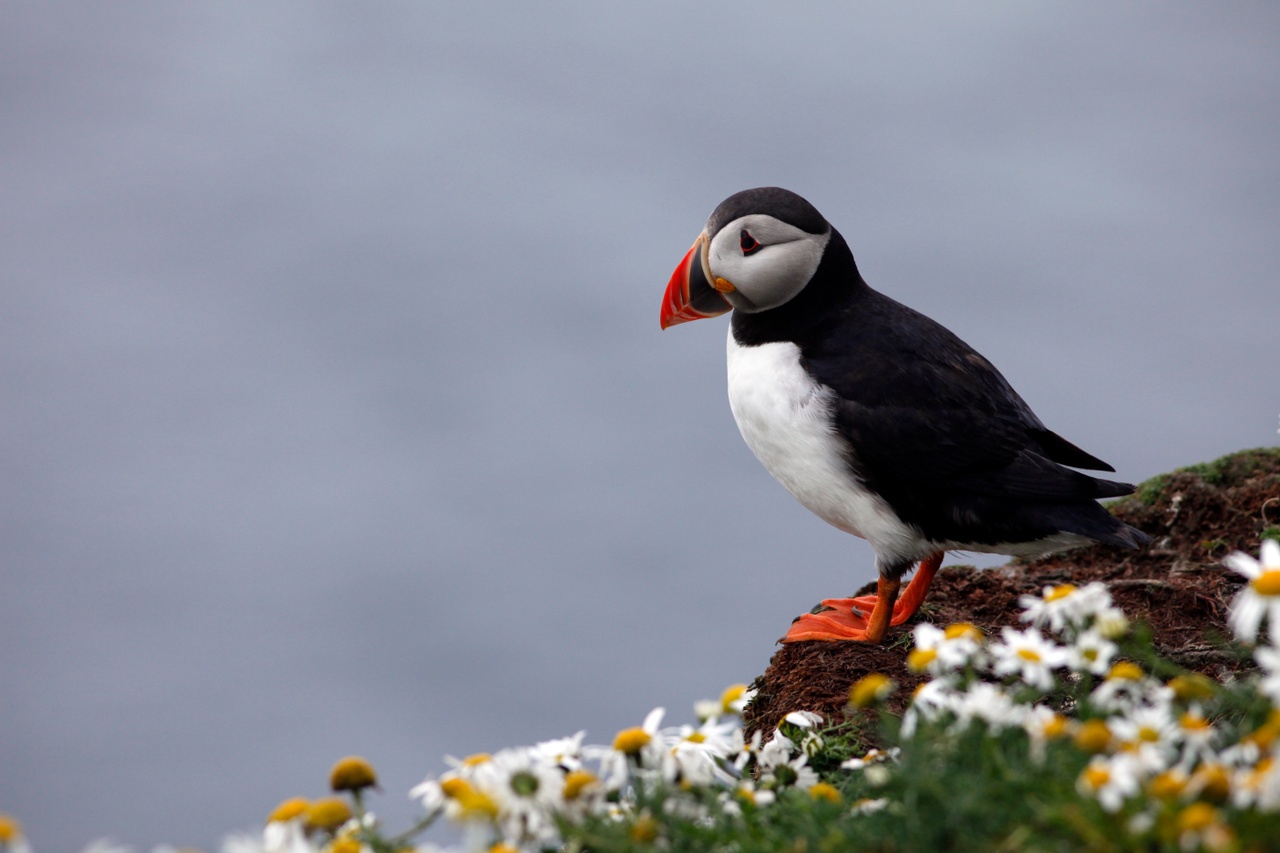
The outdoors
Shaped by billions of years of shifting sand and sea, Shetland’s natural landscape is among the most dramatic in the world. It is also teeming with wildlife. From orcas and puffins to the famous Shetland ponies and dolphins, opportunities to spot Shetland’s wild inhabitants are all around. Species like whales and otters are rarely sighted, but seals are easy to spot, while in summer you can witness millions of nesting seabirds including guillemots, razorbills, fulmars and kittiwakes at the cliffs of Sumburgh Head, Hermaness and Noss.
Further inland, miles of undulating wilderness unfurl to reveal serene lochs populated by wading birds, birds of prey circling overhead, and in the summer months, a myriad of colourful and delicate flowering plants, many unique to Shetland. Come during winter and you might be lucky enough to see that most spectacular of natural phenomena, the ‘mirrie dancers’, what Shetlanders call the aurora borealis or ‘Northern Lights’.
Leisure
One of Shetland’s biggest draws has to be the sheer wealth of outdoor activities available. With 900 miles of coastline and plenty of hills to explore, Shetland is made for walking, hiking and cycling. The calm and crystal-clear coastal waters are perfect for kayaking and diving, while anglers are spoilt for choice with more than 300 lochs. Yachting is another popular pastime, especially in summertime, with sailing regattas held regularly.
The islands also boast an event-packed calendar with Up-Helly-Aa season in January, the world-famous Viking fire festival, Shetland Boat Week in August, and the weeklong Fiddle Frenzy in October. There are also a wide array of galleries where you can view and purchase visual art made by talented locals.
Find out more about the outdoors and leisure on VisitScotland.com
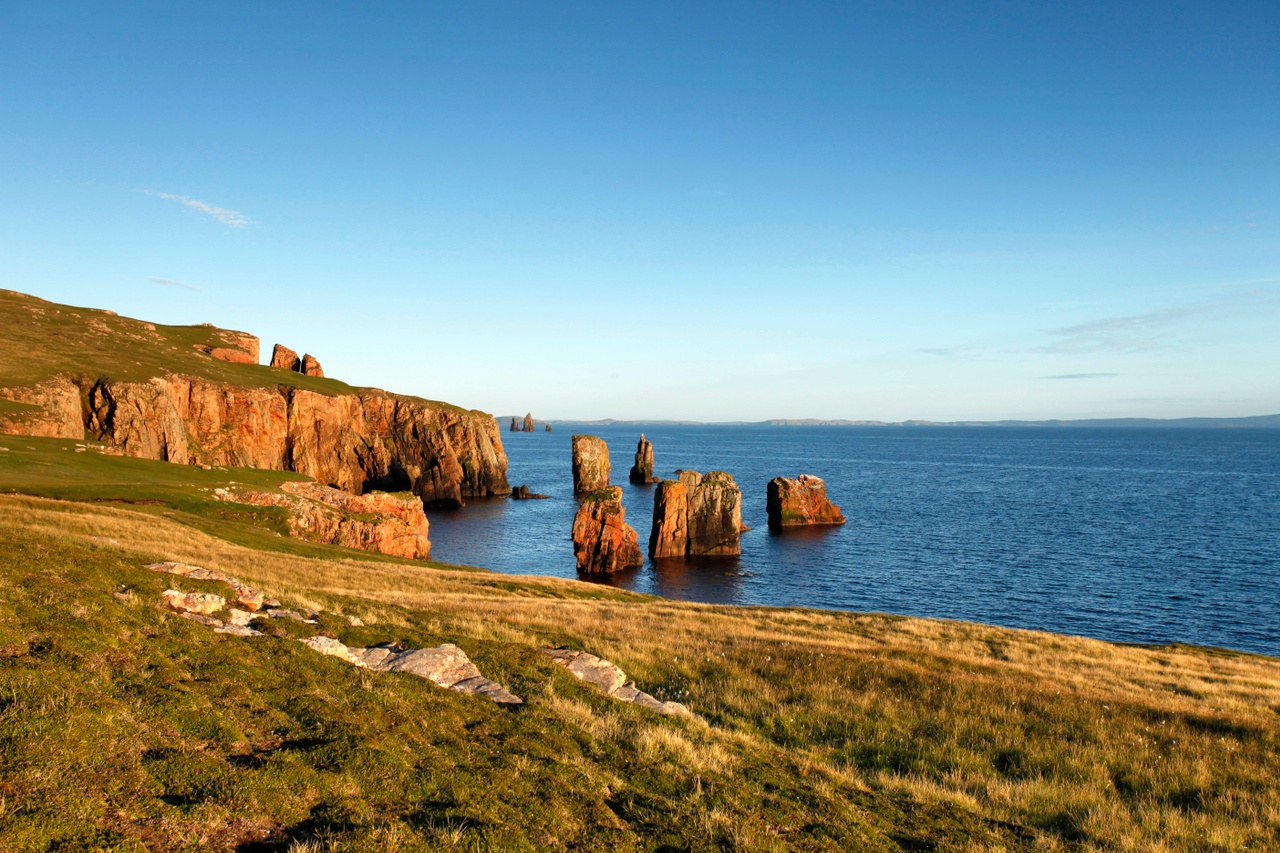
Accommodation
Situated around 190 miles north of Aberdeen and just over 200 miles west of Bergen, Norway, the Shetland Islands are northern-most part of the UK, but are surprisingly accessible thanks to regular ferry and air links. The tight-knit, diverse community, abundant natural beauty and unspoiled environment also make this a highly desirable place to live.
Although there are over 100 islands, only 12 are inhabited, so whether you are a full-time or seasonal resident you can expect properties to be priced at premium in more urbanised areas with quick access to local amenities. However if you are seeking a calmer pace of life surrounded by spectacular scenery, Shetland couldn’t be more attractive.
Perthshire
Located in the very heart of central Scotland, Perthshire also goes by the nickname of Big County. The region is home to Scone Palace, the ancient residence of Scottish monarchs.
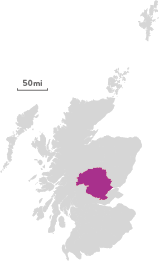
Population: 151,130
Five fascinating facts
| 1. Perthshire’s Fortingall Yew Tree is believed to be the oldest tree in Britain and one of the oldest in all of Europe |
| 2. The delightful town of Dull in Perthshire is paired with Boring in Oregon, America |
| 3. Scotland’s oldest established family record shop, Concordemusic, is in Perth |
| 4. The River Tay, which flows from Loch Tay to Perth and beyond, is Scotland’s longest river |
| 5. The Stone of Scotland, used for centuries in the coronations of Scottish monarchs used to be housed at the now-ruined Scone Abbey in Scone |
Education
The region of Perthshire is home to 112 primary and secondary schools, which are spread throughout the region, meaning that you will never be far away from a school. As with the rest of Scotland, the education system in this region accommodates all ages from pre-school to post-school education and training.
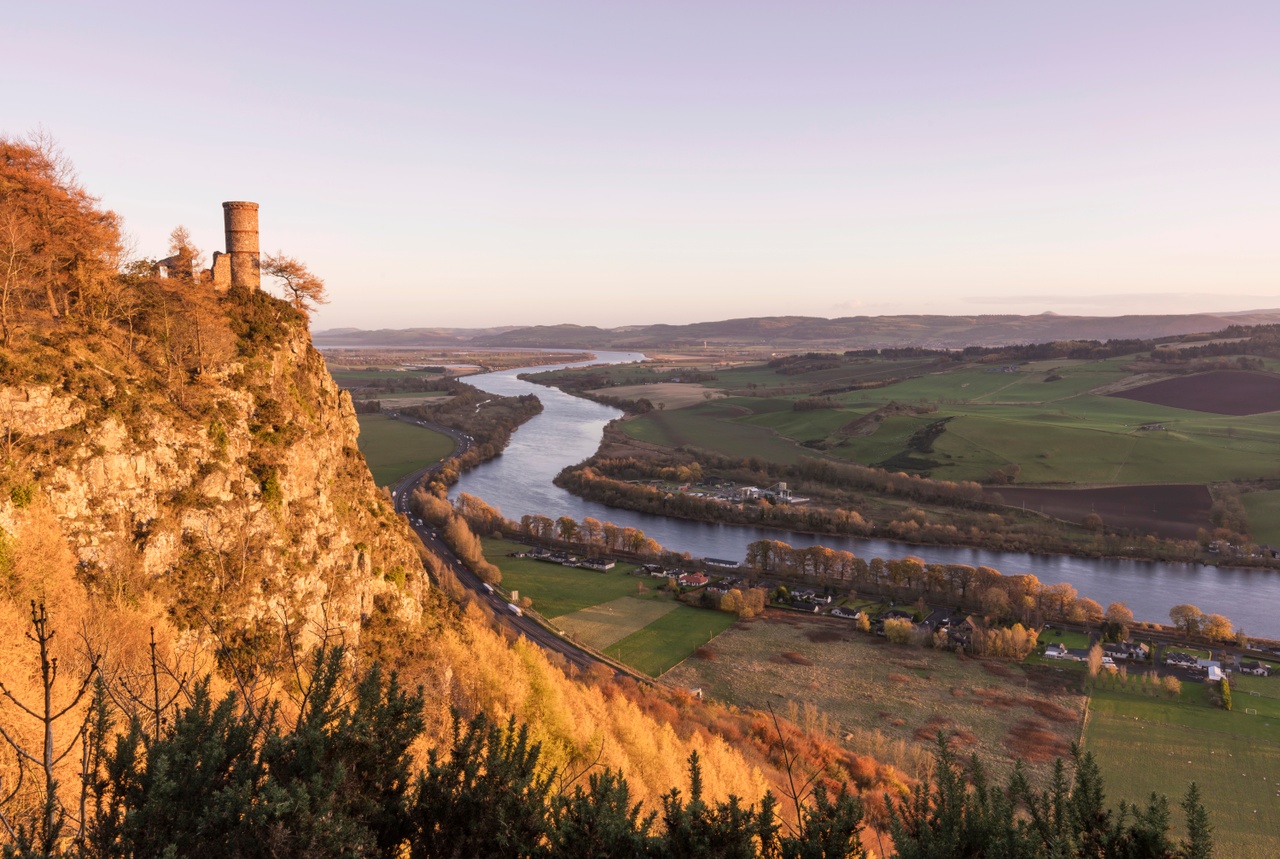
As well as these schools, the region also benefits from a higher education institution in the form of Perth College. This college is a partner of The University of Highlands and Islands which provides further and higher education to the area. Here you can study everything from smaller qualifications right through to undergraduate and postgraduate courses.
Find out more about the school system in Scotland
Find out more about universities in Scotland
Local industries
Perth, which is the main city in this region, is the headquarters for three major Scottish companies – drinks company, Highland Spring, travel company, Stagecoach, and energy company SSE. This highlights that large industry blossoms throughout the region away from the major cities like Edinburgh and Glasgow.
On top of this, the region’s key business sectors include the financial services industry, which accounts for more than 8,000 jobs. Also, the food and drink industry, which includes SMEs like the award-winning Highland Chocolatier, alongside industries such as tourism, renewables and clean energy and retail all present opportunities for growth.
Find out more about working in Scotland
Transport
The region can be easily accessed from Edinburgh, Glasgow, Stirling, Aberdeen, Dundee and Inverness, with major motorways and roads making travel to surrounding areas a breeze. Although the nearest airport to Perth is Dundee, a 25-minute drive away, many people arrive via Edinburgh and Glasgow airports. Trains serve the region well, and all trains to Inverness call at Perth. The region also benefits from direct rail services to and from London. Once in Perthshire you can get easily around and explore by car, taxi, bus, or bike.
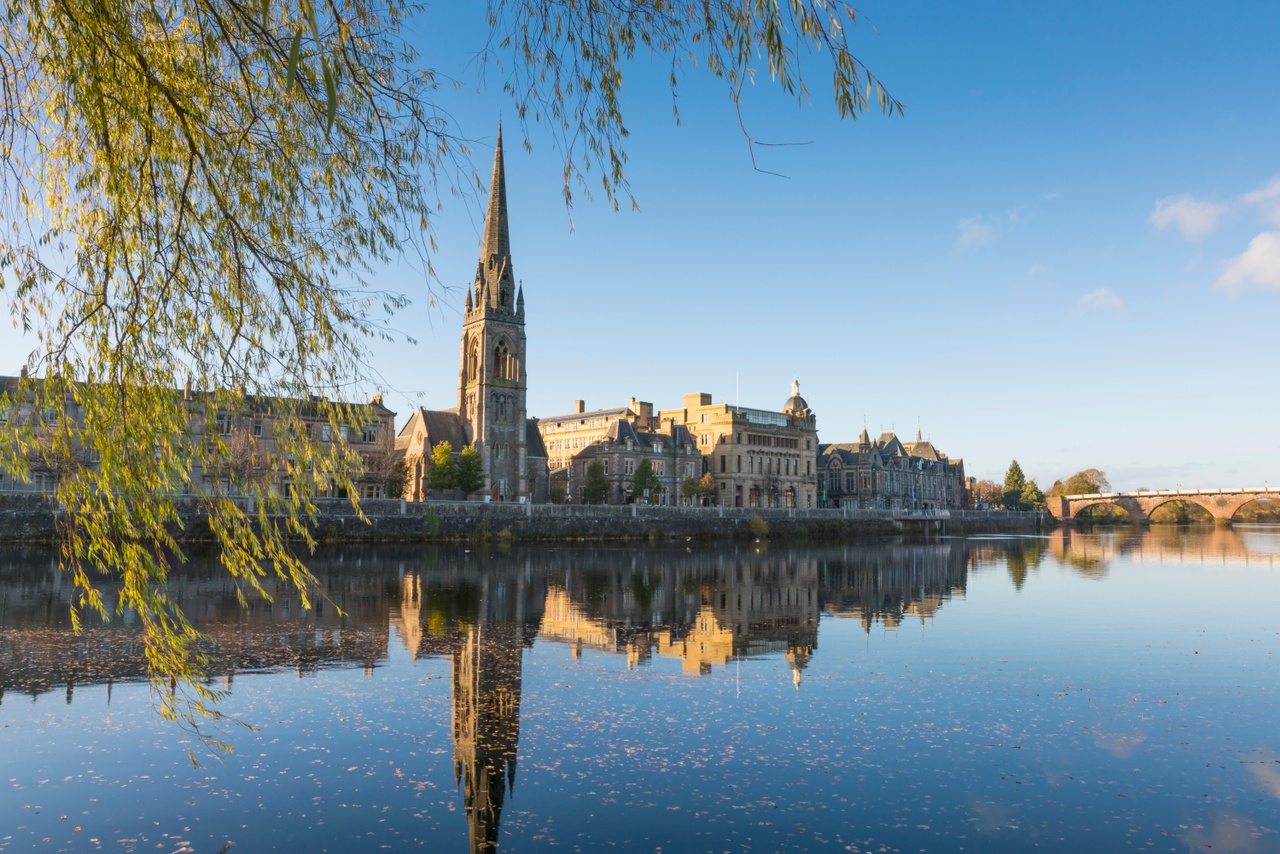
The outdoors
Sir Walter Scott referred to Perthshire as “the fairest portion of the northern kingdom” and he had a fair point! Perthshire as an area is overflowing with natural beauty. It has it all: glens, Munros, waterfalls, forests, moors, rivers, woodlands and gardens. A great way to see some of Perthshire’s scenic highlights is by following the Cateran Trail, which takes you on a 64-mile trek that can be done in five days.
Perthshire is known as big tree country and has 200,000 acres of woodland which are beautiful to explore in all seasons. Though as serene as all this natural beauty is, Perthshire is also an outdoors adventure playground with water-rafting, biking, paintballing, climbing, bungee jumping, off-road driving and wildlife tours all available across the county.
Leisure
A visit to the city of Perth, will bring you to the banks of the River Tay. The River Tay Public Art Trail is a series of beautiful sculptures that follow the River through the city and help pay tribute to Perth’s heritage Though you may want to spend your time unwinding with a round of golf. Perthshire has some of the oldest and most famous golf courses in the world, including the three championship golf courses at Gleneagles.
There’s also Pitlochry Festival Theatre to visit. Scotland’s Theatre in the Hills is a magical performing arts space. And just round the corner from Pitlochry is The Queen’s View, a famous vantage point that overlooks Loch Tummel and beyond, to the iconic Schiehallion munro, and is said to have been named after Queen Victoria when she visited the area in 1866.
Find out more about the outdoors and leisure on VisitScotland.com
Accommodation
For visitors to Perthshire, accommodation is varied. From B&Bs, to hotels, from self-catering to camping to exclusive use of magnificent private estates, there are plenty of places to stay, whether you want to visit the majestic countryside or stay in the towns or villages or in the city of Perth itself. For more permanent stays, the housing market for both rental and to buy can accommodate all needs across the county.
Orkney Islands
Consisting of 70 individual islands, of which only 20 are inhabited, the Orkney Islands can be found roughly 10 miles off the north coast of Scotland.
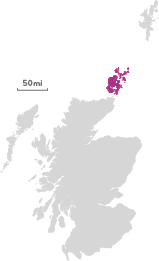
Population: 22,030
Five fascinating facts
| 1. Orkney is actually closer to the arctic circle than it is to London |
| 2. Orkney library was founded in 1683 – making it the oldest public library in Scotland |
| 3. 15% of the world’s seal population can be found in Orkney |
| 4. Captain Cook’s ships, Discovery and Resolution both visited Orkney in 1780 |
| 5. Orkney lays claim to the world’s shortest flight – a 1.7 mile, two minute flight between Westray and Papa Westray |
Education
Orkney is home to over 20,000 people and its education system supports children from nursery right the way through to post-graduate study. The islands are home to two secondary schools, three junior schools and two higher education colleges, meaning that, despite the remoteness of the region, there is still an institution in place to cover all levels of education. As well as this, the Islands offer baby and toddler groups and child-care for families’ pre-nursery needs, and a range of vocational skills training too.
Find out more about the school system in Scotland
Find out more about universities in Scotland
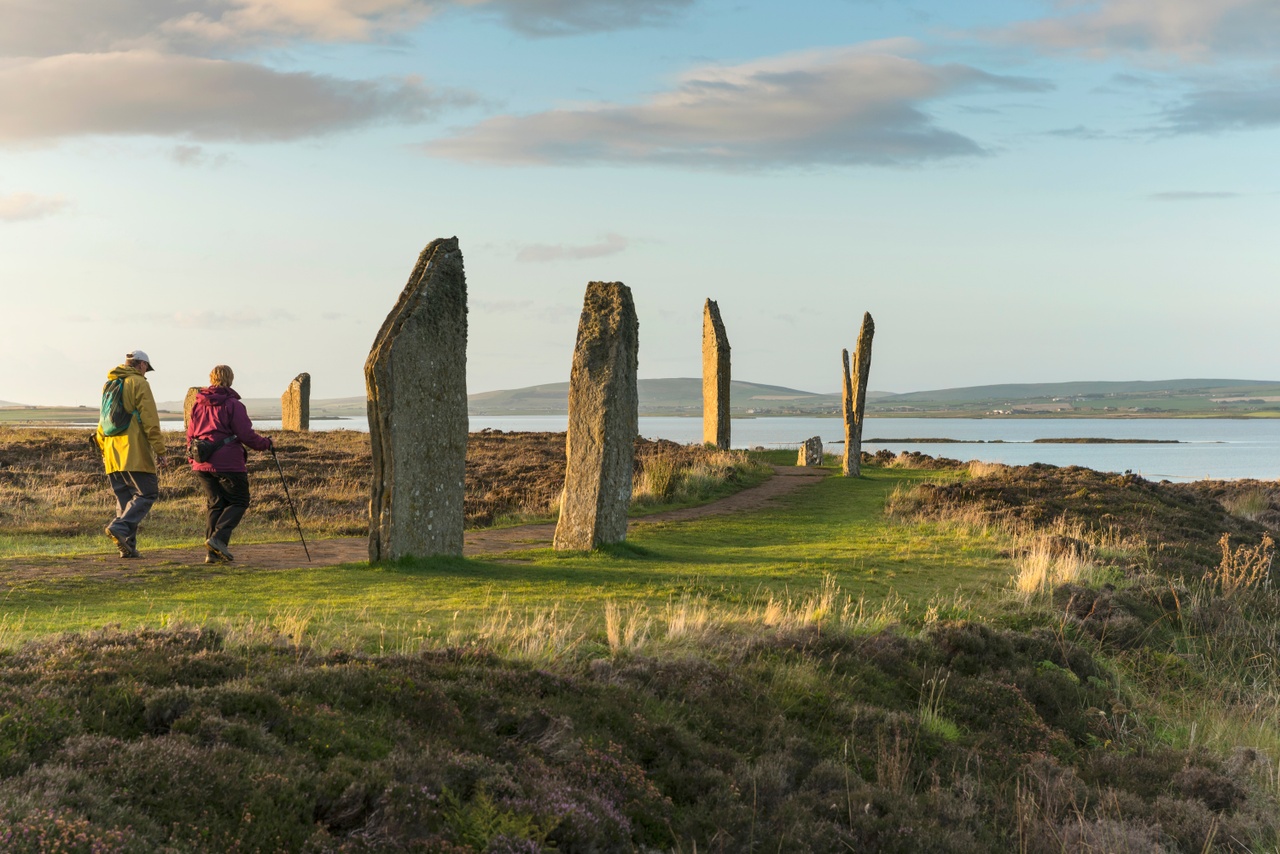
Local industries
The European Marine Energy Centre is based in Orkney, helping the Islands to generate more electricity than they need, by harnessing wind, wave and tidal power.
Other local industries in Orkney include tourism, a thriving farming sector and a small but strong fisheries and aquaculture industry. On top of this, manufacturing and food processing businesses are growing too.
Find out more about working in Scotland
Transport
You can fly to Orkney from Glasgow, Edinburgh, Aberdeen, Inverness or Shetland. Alternatively, you can also travel by car or coach to the ferry port in Aberdeen that goes to Kirkwall, the capital of Orkney. There is also another ferry port, further north in Caithness, which will transport you to Orkney’s second largest town, Stromness.
Once on Orkney, you can get inter-island flights and ferries from Kirkwall, hire a taxi, car, bike or jump on a bus. An excellent road network makes getting around easy, and what the cars can’t do, the ferries or inter-island flights can.
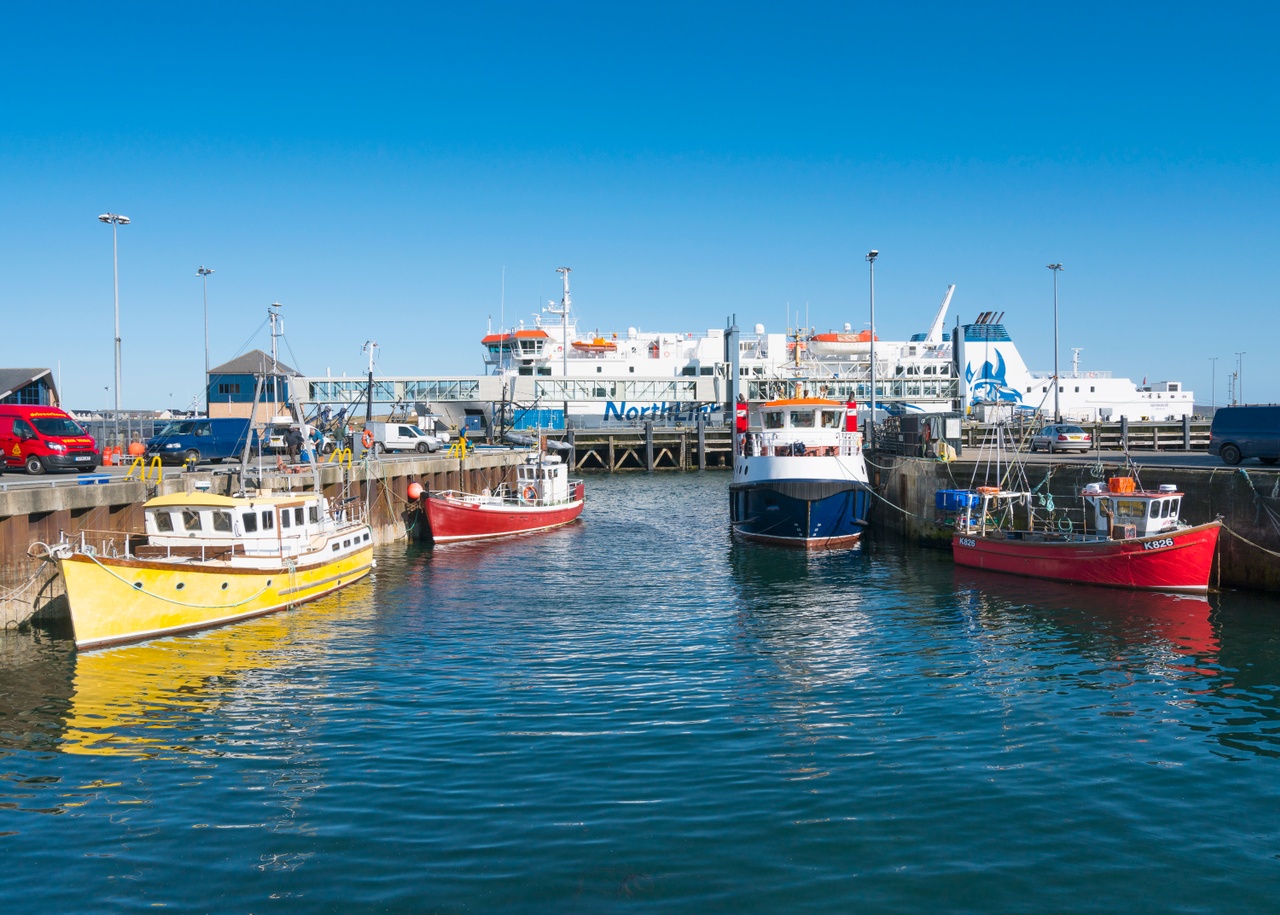
The outdoors
The best way to enjoy the breathtaking beauty of Orkney is by putting on your shoes and coat or snorkel and flippers and getting out and about. Seventy islands make up Orkney and you can explore the islands by land, sea or air. You can walk or cycle the islands, take to the seas in a kayak or to the air for a bird’s eye view.
On the other hand, why not go searching for those seals with some scuba diving? A great time to visit is during May, when Orkney’s Nature Festival is in full swing. The festival is jam-packed with lots of amazing events that will steer you towards what’s great about the islands and local wildlife. Everything from killer whales, dolphins, and a million seabirds pass through the seas or occupy the cliffs of Orkney throughout the year.
Leisure
It wouldn’t quite be Scotland if there wasn’t a distillery or two on Orkney. And one way to wind down after all that exploring the great outdoors would be to visit the Island’s whisky and gin distilleries. For the teetotallers among you, why not tune in to a piece of radio history with a visit to The Orkney Wireless Museum?
And for those of you with a more creative side, Orkney has a thriving craft scene, and you could while away your time going on the Orkney Craft Trail or by taking a craft class like pottery. However, Orkney is teeming with history, so just spending your visit taking in all the ancient sites on the Islands would see your time well spent.
Find out more about the outdoors and leisure on VisitScotland.com
Accommodation
Everything from self-catering to hotels and inns, bed and breakfasts and hostels and camping awaits the visitor to beautiful Orkney. If you’re setting up home in Orkney, sales and rental markets offer all sorts of affordable accommodation from traditional to modern, house, flat or cottage.
Loch Lomond, the Trossachs, Stirling and the Forth Valley
Situated in the centre of Scotland, and stretching almost from coast-to-coast Loch Lomond, the Trossachs, Stirling and the Forth Valley incorporates some of Scotland's best known sights and is known as the 'Gateway to the Highlands'.
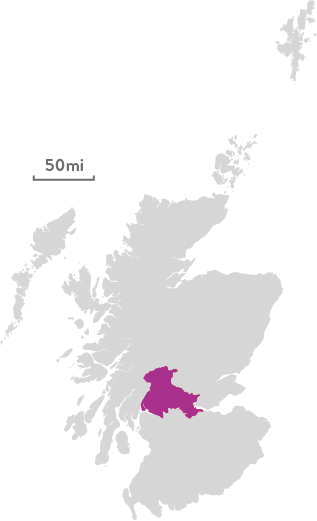
Population: 416,930
Five fascinating facts
| 1. Mary Queen of Scots spent much of her youth living in Stirling Castle |
| 2. Stirling Castle has played host to concerts by musical legends REM and Bob Dylan |
| 3. 50% of Scotland's population live within an hour's drive of Loch Lomond and The Trossachs National Park |
| 4. The Falkirk Wheel is the world's only rotating boat lift and uses the same amount of energy to turn as boiling 8 household kettles |
| 5. Scottish folk hero Rob Roy MacGregor was born, in 1671, at the head of Loch Katrine in this region |
Education
Stretching from the east coast to the Highlands, and taking in several council areas, the region boasts a variety of educational opportunities – from the top-performing Larbert High School, to small, rural schools. Three Stirling secondary schools - Dunblane High, Balfron High and McLaren High - have been named among the top 50 in Scotland.
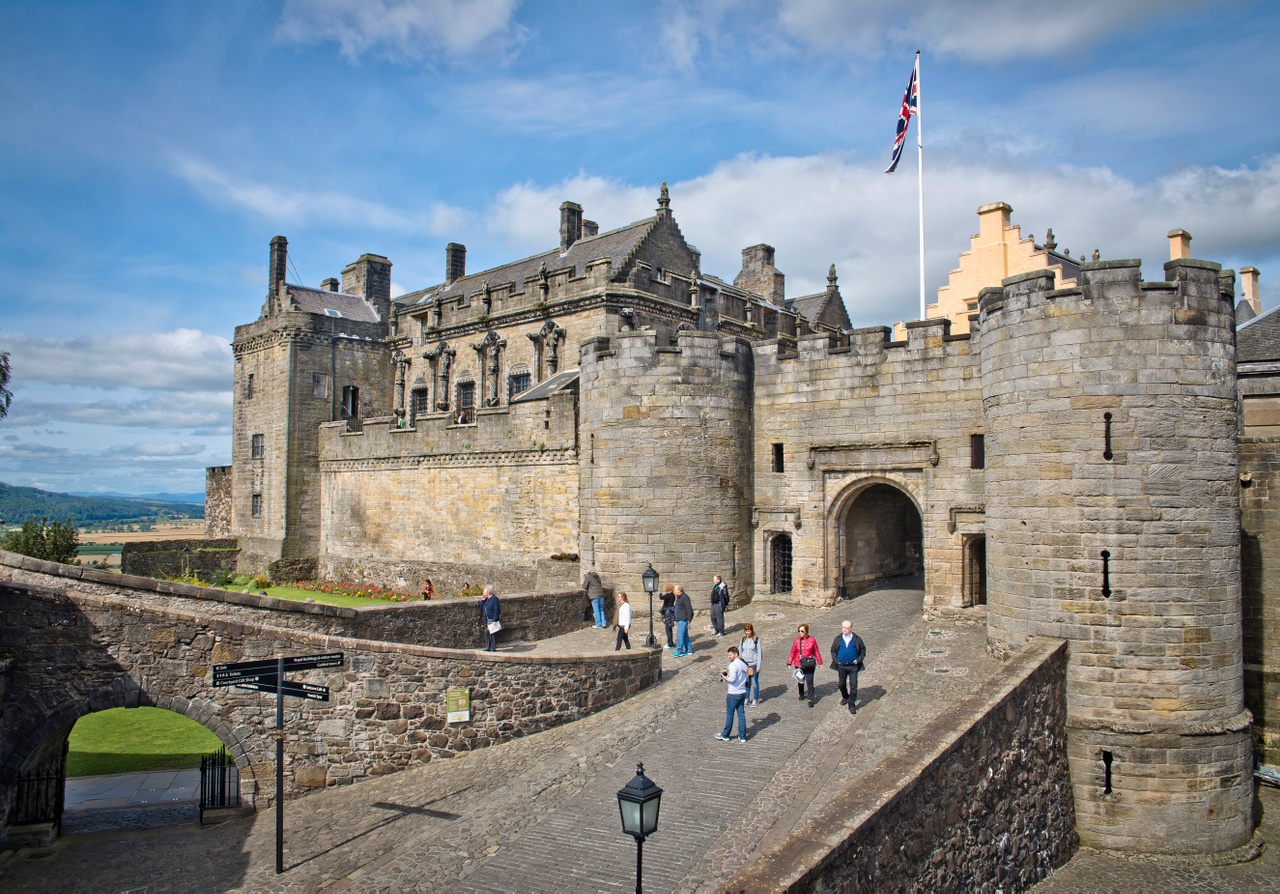
The region is also home to The University of Stirling, which has been ranked in the top 3% of global universities. As well as this, the region also has a community college, called Forth Valley College. This institution offers a large amount of courses, with everything from entry-level right through to degree level and has campuses in Falkirk, Alloa and Stirling.
Find out more about the school system in Scotland
Find out more about universities in Scotland
Local industries
Agriculture, petrochemicals, finance, and tourism are the area’s main employers. Stirling has a strong and stable local economy with highly developed financial services, tourism and food and drink sectors supported by a rapidly emerging digital technology sector. Stirling University Innovation Park, for example, is home to over 40 research and development businesses.
The quality of Stirling as a business location is testified to by the presence of major businesses such as Capita, Prudential, HSBC, IFDS, Iberico, Maxxium UK and Graham’s Dairy to name but a few. Not only this, but Stirling was also recently voted the best place in Scotland to start a business and 8th in the UK.
Find out more about working in Scotland
Transport
The city of Stirling is well connected by road and rail to nearby cities such as Glasgow, Edinburgh and Perth, with excellent transport connections into the more rural areas of the region. This makes it easy to get around, even if you do not have a car.
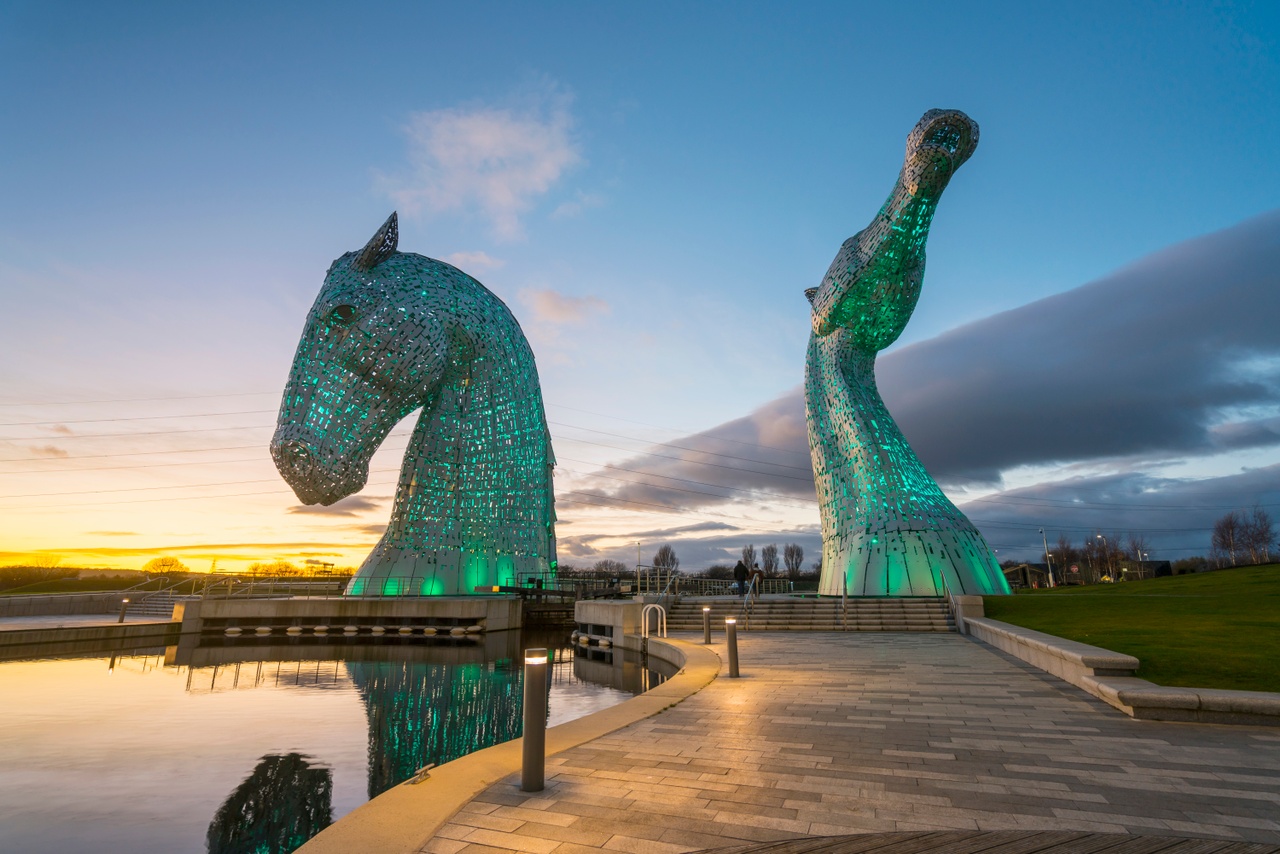
If you live in one of the more rural areas, a great way to get around and see more of the area is also by bike. There’s also a main canal system in the area, connecting Edinburgh and Glasgow with scenic walking routes, bike routes such as the Rob Roy Loop and Alloa Hillfoots Cycling Loop or even hire a canal boat if you are feeling up to it.
The outdoors
Landscape is undoubtedly the region’s trump card and it benefits from some of Scotland’s most stunning and most famous views. At the top of the list is the Loch Lomond and The Trossachs National Park, which was Scotland’s first national park and spans nearly 2,000 square kilometres. Within this, you will find the smaller but equally stunning Queen Elizabeth Forest Park, which sprawls up towards the Highland region. Further south you'll find the Ochil Hills with stunning glens and waterfalls providing impressive views of Stirling and beyond.
If that’s not enough, there are also 22 lochs (and one lake – Scotland’s only natural lake too!), as well as 39 miles of coastline around three sea lochs and many miles of rivers. Water-babies can go sailing, canoeing, kayaking, windsurfing, paddle boarding, fishing, or just enjoy a scenic cruise. Golfers are also well catered for, with the region boasting a wide range of public and private courses. Take your eye off the ball and you might spot some of the locals; the area is home to capercaillies, red deer, red squirrels, wildcats, golden eagles, black grouse, buzzards and ospreys.
Leisure
Once the capital of Scotland, Stirling is dominated by its castle. The city’s strategic position, as the lowest bridging point of the River Forth, has seen it described as the ‘brooch that clasps the Highland and the Lowlands together. If history is your thing, you can visit Stirling Castle, the National Wallace Monument, and the Battle of Bannockburn Visitor Centre.
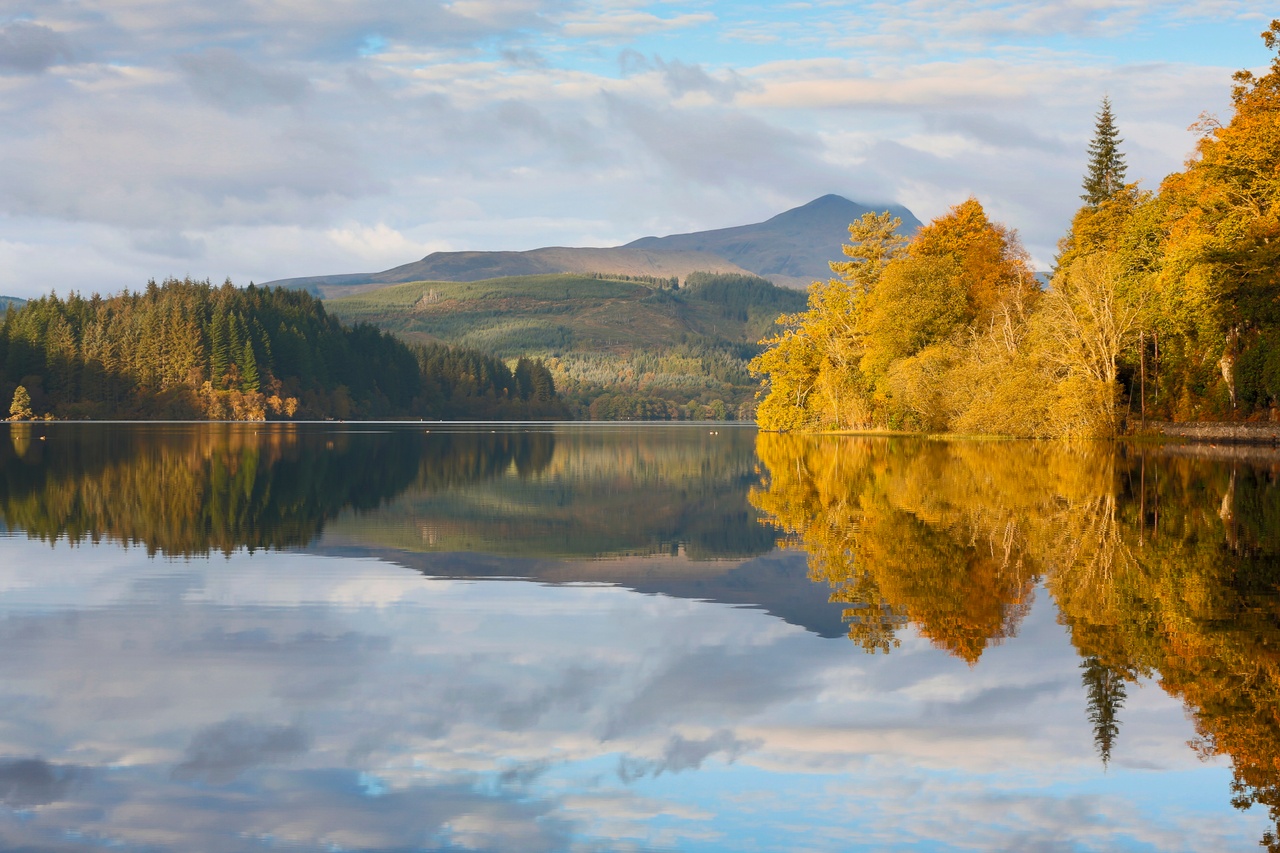
Fancy some art, head to the Smith Art Gallery and Museum or the Macrobert Arts Centre. Located in the heart of the old town, the Tolbooth is Stirling’s venue for live music and the arts, offering a year-round programme of live music, comedy, theatre and creative workshops.
Find out more about the outdoors and leisure on VisitScotland.com
Accommodation
Stirling is the UK’s most affordable city to live in. In the past 5 years, house prices in the city have gone up by just 3% compared to 26% in Edinburgh. Falkirk, in the Forth Valley, offers good value for money, and an easy commute to either Glasgow or Edinburgh. Falkirk residents find the cost of running their home the most manageable in the UK. Many of the area’s smaller town and villages offer historic properties, from grand Victorian villas to small, cosy cottage living.
The Highlands and Moray
By far the largest region in Scotland, the Highlands cover nearly 10,000 square miles in northern Scotland. The region is home to stunning scenery, including the legendary Loch Ness.
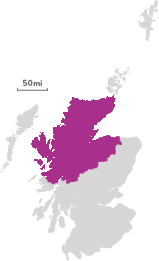
Population: 330,010
Five fascinating facts
- Highland heights: the highest mountains in the UK are in the Highlands, ranging from Aonach Mòr at 1,221m to Ben Nevis at 1,345m.
- Home to Nessie – it’s no wonder she is elusive; Loch Ness holds more fresh water than all the lakes in England and Wales combined.
- A stargazer’s paradise: The Highlands are home to some of Europe’s darkest skies. Areas like Caithness and Sutherland, Wester Ross and Skye offer spectacular views of the Milky Way – and the Northern Lights when the weather conditions are right.
- Seafood royalty: The waters around the Highlands are among the richest in the world for seafood. West coast towns like Mallaig are renowned for their langoustines, mussels, and hand-dived scallops.
- Wildlife wonders: The Highlands is one of the few places in the UK where you can see golden eagles soaring, red deer roaming the glens, and dolphins playing in coastal waters – all in a single day.
Education
There are 245 primary and secondary schools across the Highlands. As well as this, the region is also home to the University of the Highlands and Islands. The university is made up of 10 different colleges and research institutions, offering undergraduate, postgraduate and research programmes across its 48 different campuses and learning centres.
One of the Scotland’s most hard-to-reach schools is on the Scottish peninsula of Scoraig, which can only be reached by boat or winding coastal path and has a headcount of just nine pupils.
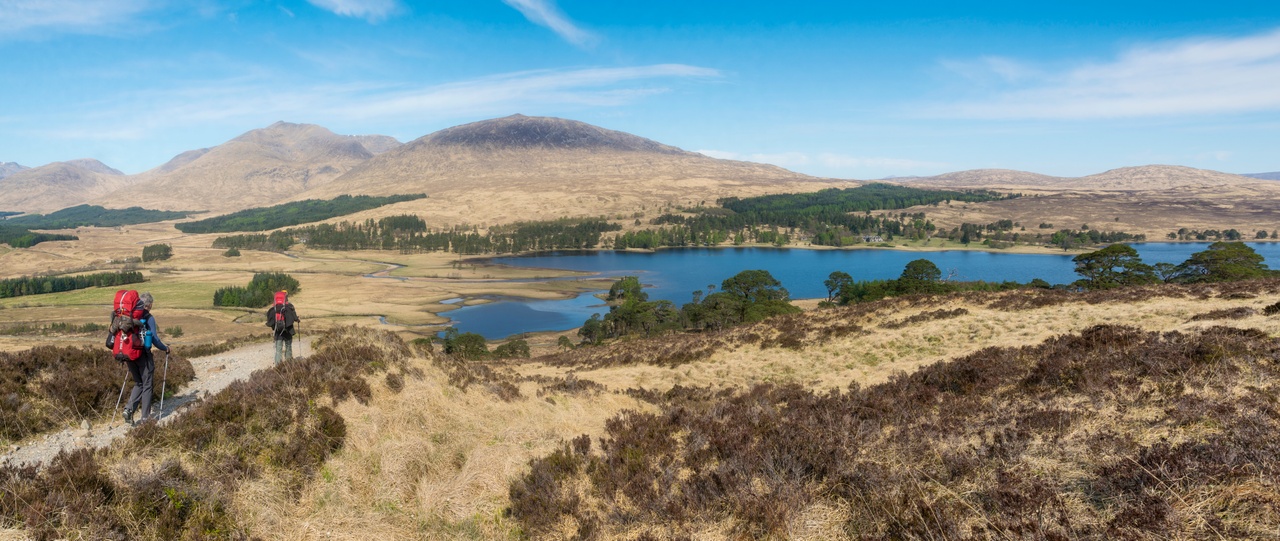
Find out more about the school system in Scotland
Find out more about universities in Scotland
Local industries - a taste of tradition and innovation
The Highlands and Moray are alive with craftsmanship, culture, and cutting-edge innovation. From world-famous whiskies to the region’s remarkable natural larder of seafood, game, and artisan produce, food and drink are at the heart of life here. The region’s thriving tourism sector, celebrated for its warm hospitality and iconic landscapes, is complemented by a vibrant cultural scene incorporating Gaelic, Scots and Viking heritage.
Beyond its charm and natural beauty, the Highlands are building a bold future through innovation. Life sciences and advanced manufacturing thrive here. The region is at the heart of the clean energy revolution, including offshore wind, hydrogen production and tidal energy as well as the Inverness and Cromarty Firth Green Freeport. The space sector is growing here too, with the Highlands home to the site of a planned spaceport in Sutherland, and space company Orbex designing and manufacturing launch vehicles in Forres, Moray.
Find out more about working in Scotland
Transport
Buses and trains connect with Edinburgh, Glasgow and Scotland’s other major cities. Buses reach from Glencoe to Fort William and beyond, while trains connect with Inverness and as far north as Thurso.
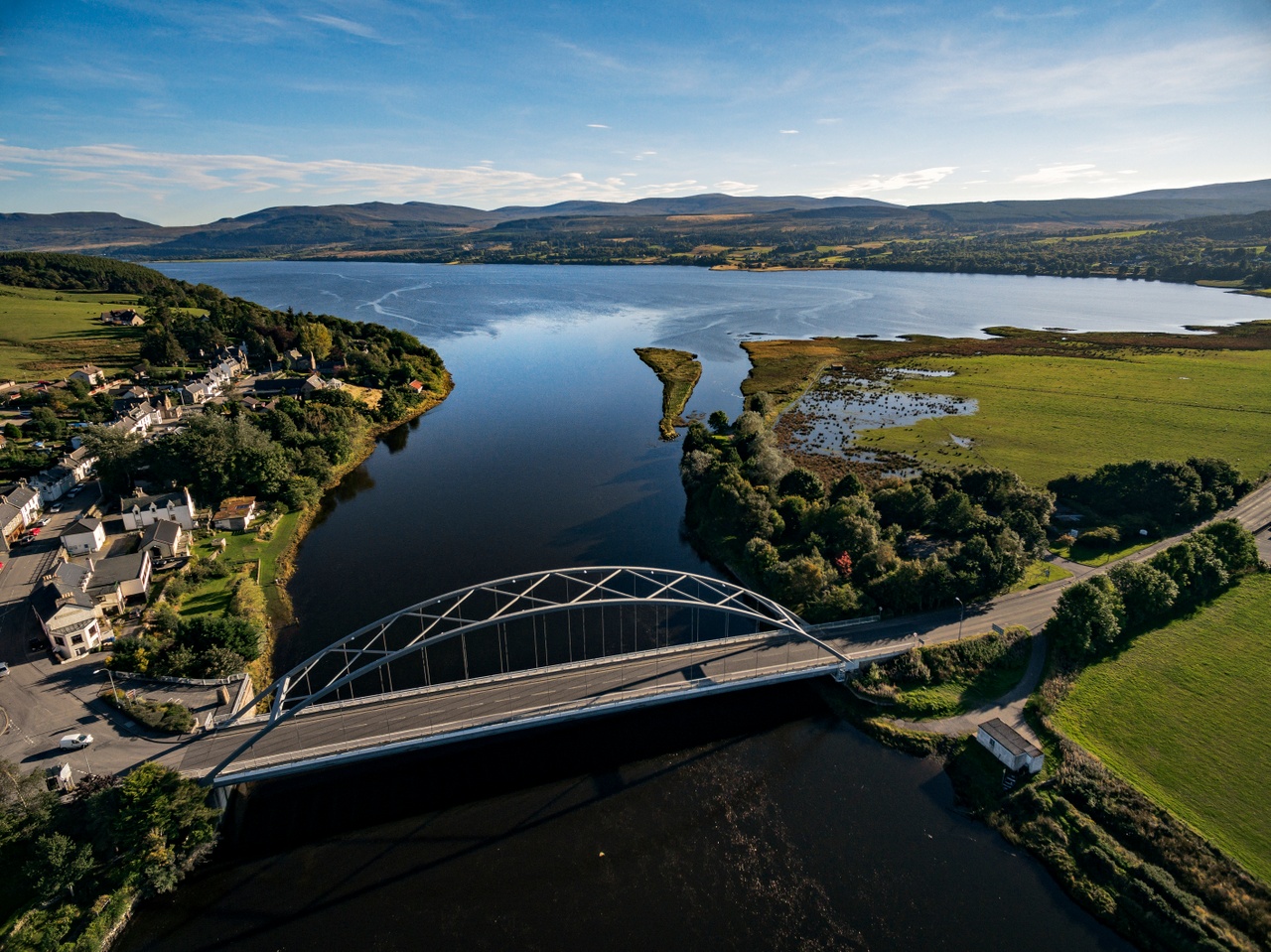
Inverness is accessible from London by rail and air. The airport in the region also reaches further out to Europe, with destinations such as Amsterdam and Belfast.
The outdoors
Sporting some of the world’s most stunning scenery, the region is spoilt with wonderful walks and has one of the oldest and most fascinating histories on earth. Part of the Cairngorms National Park lies within this region, offering everything from stunning hiking routes to ice climbing, skiing, snowboarding and so much more.
To the west you will find the magical Isle of Skye, which is teeming with incredible outdoor spots to explore, including the famous ‘fairy pools’, the Cuillin mountain range and the ‘Old Man of Storr’. Throw in the odd spot of kayaking, camping and skiing and it offers so much for everyone. The vast landscape has an undulating coastline, wild expanses, rugged mountains and islands, rushing rivers, and conifer-rich woodlands.
Leisure
The Highlands also feature legendary battlefields, museums packed with rich local history and breathtaking geological wonders, not to mention many famous distilleries and breweries and luxury hotels and resorts.
Who could forget Aviemore, a quaint town offering retail therapy and the perfect gateway for a Highland tour. The West Highland Way, which runs from Milngavie to Fort William is a 96-mile-long hiking route that takes in some of Scotland’s most stunning sights and is a great experience for families and individuals.
Find out more about the outdoors and leisure (visitscotland.com)
Accommodation
The brilliant aspect of staying in the Highlands is that there is a wide choice of accommodation to suit all budgets. From wildly remote cottages to seaside villages and larger settlements, like Inverness, the region has an abundance of old and new homes, with views that may make you pinch yourself.
Greater Glasgow and the Clyde Valley
Located on the west coast of Scotland, Greater Glasgow and the Clyde Valley sits on the River Clyde and is home to Scotland's largest city - Glasgow.
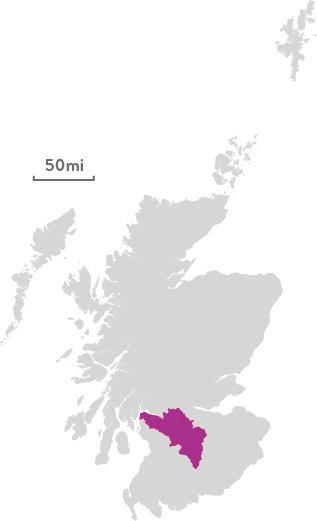
Population: 1,759,310
Five fascinating facts
| 1. Glasgow, Scotland’s biggest city, used to build 20% of the world’s shipping |
| 2. The 18th century village of New Lanark is a UNESCO World Heritage Site, and is one of the birthplaces of Britain’s Industrial Revolution |
| 3. In 1789, some 40 years before London, Glasgow became the first city in Britain to establish its own police force |
| 4. Paisley, Glasgow’s next-door neighbour, boasts the highest concentration of listed buildings in Scotland outside of Edinburgh |
| 5. Established in 1783, Glasgow’s Chamber of Commerce is the oldest in the English-speaking world |
Education
The city and region offers a wide variety of top performing schools, both state and private. Included in this list is Glasgow’s Holyrood RC Secondary School, which is the country’s largest school, with more than 2,000 pupils enrolled. If you prefer a more intimate experience, there are also a wide range of small, village schools, Gaelic schools, and single sex institutions to choose from, with classes and courses to suit all ages and abilities.
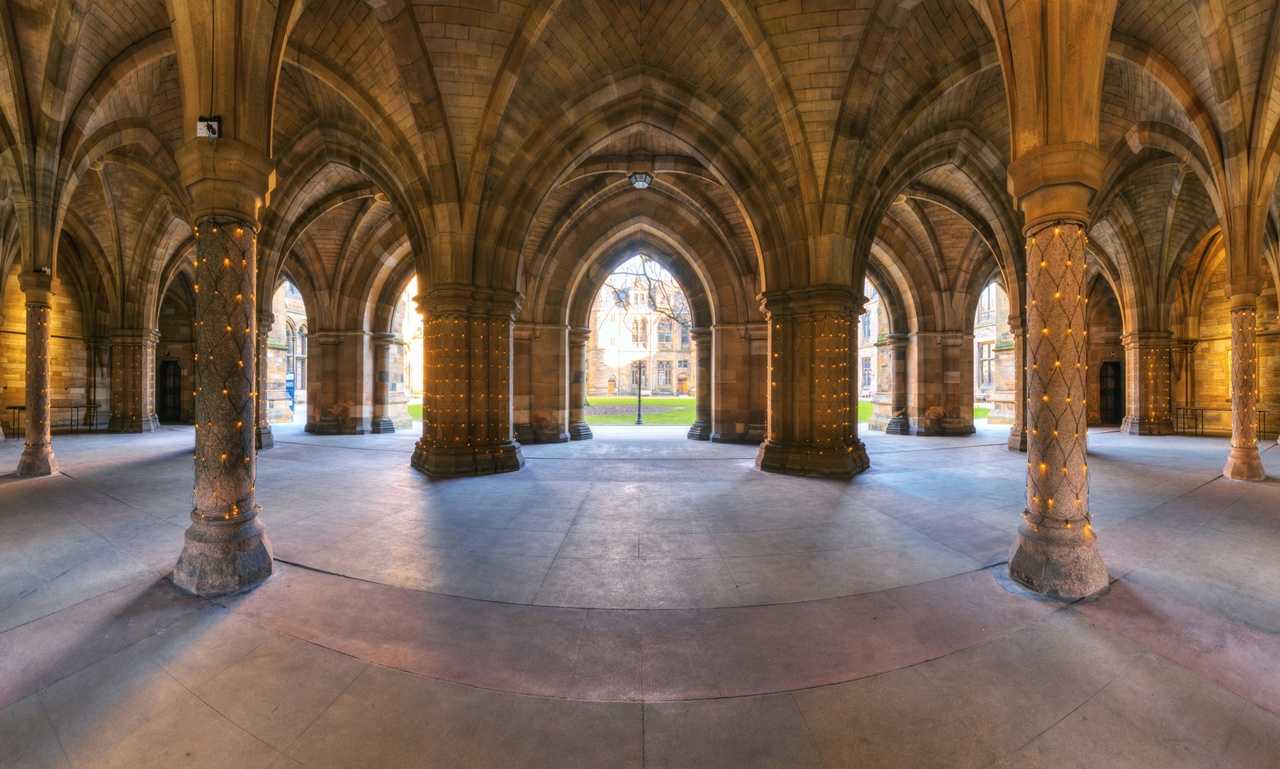
In terms of higher education, the area also boasts four highly-rated universities, including the historic University of Glasgow. Founded in 1451, the university is one of Scotland’s ‘ancient universities’ and is the fourth oldest in the UK. The region is also home to the world-famous Glasgow School of Art, and the Royal Conservatoire of Scotland, the country’s centre for the performing arts and one of the top three performing arts schools in the world.
Find out more about the school system in Scotland
Find out more about universities in Scotland
Local industries
Once famous as an industrial and mining centre, the city and region has seen a resurgence in recent years with growth in digital technology, tourism and the creative arts. Glasgow is a digital tech heavyweight, boasting a wide range of blue-chip employers in the fintech, e-commerce social networking and software sectors. In recent years, the city has also emerged as one of Europe’s leading financial centres.
Find out more about working in Scotland
Transport
Glasgow and its outlying suburbs are well served by bus and rail services, while the city centre is looped by the Glasgow Subway – the third oldest underground system in the world. With two main railway stations – Central and Queen Street – Glasgow offers fast connections to the rest of Scotland and beyond.
Glasgow Airport, just 20-minutes by road from the city centre, serves over 100 destinations worldwide, and is Scotland’s principal long-haul airport as well as Scotland’s largest charter hub.
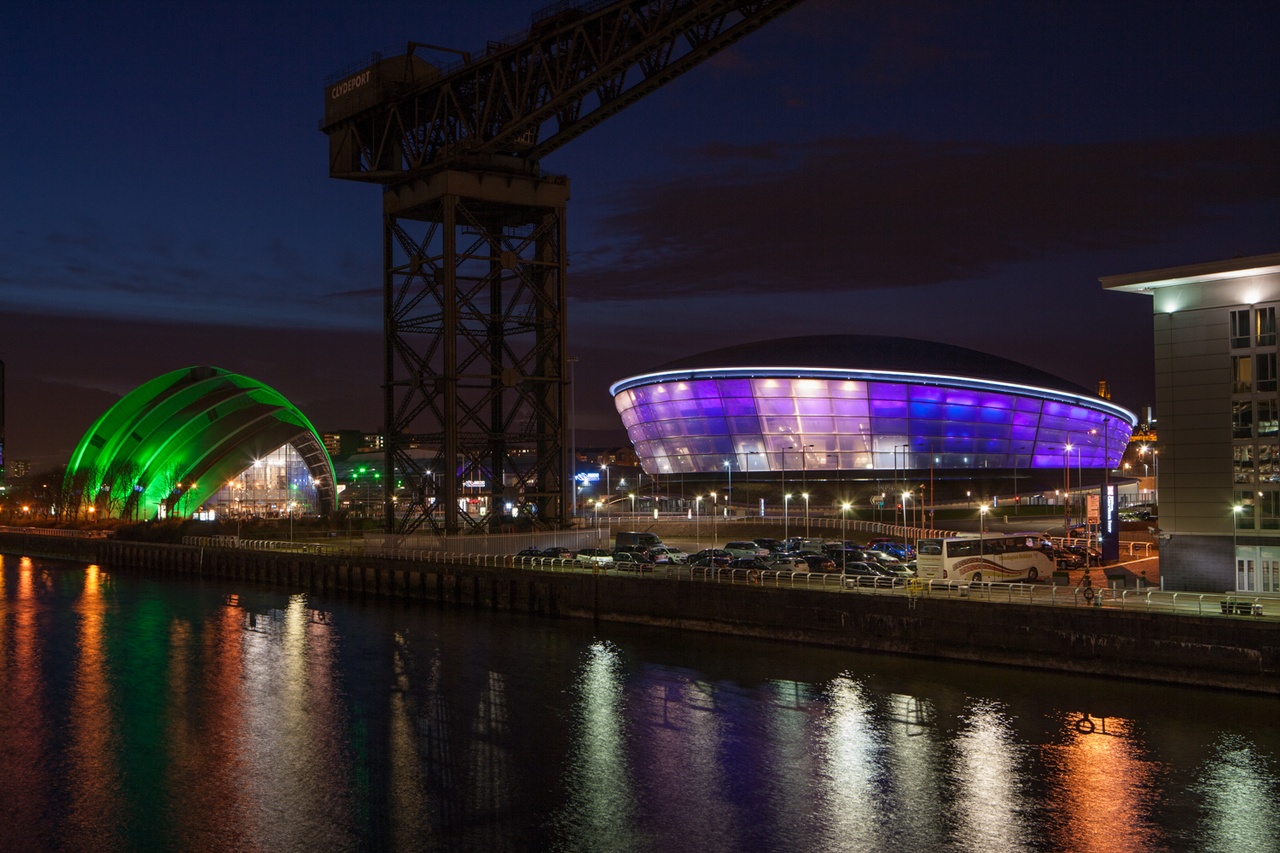
The outdoors
Glasgow’s name translates from Gaelic as ‘the dear green place’, and with 90 parks and gardens to explore, it more than lives up to that name. From the city centre’s Glasgow Green, which was established way back in the 15th century, to the Victorian delights of the Queen’s, Victoria, and Rouken Glen parks. Add on the ornate glasshouses of the city’s Botanic Gardens and you can see how almost every suburb of Glasgow boasts its own ‘green lung’.
If you would rather get out of the city, there is also a massive range of trails and routes for people of all abilities to enjoy. For hikers, walkers and mountain bikers, the region also offers easy access to the beauties of Loch Lomondside, the Campsie Fells, the Eaglesham Moors, and, at Milngavie, the start of the 96-mile West Highland Way walking route.
Leisure
Glasgow is sports mad, and in 2018 was rated as one of the world’s top five Ultimate Sports Cities. The city has had the honour of hosting everything from the 2014 Commonwealth Games – which were labelled as ‘the best ever’ – right through to the European Championships and even football’s European Cup Final.
The city benefits from a huge variety of world-class indoor and outdoor sporting facilities, including the Sir Chris Hoy Velodrome, the Emirates Arena and Hampden stadium. If music is more your thing, then incredible venues like the SSE Hydro,Glasgow Barrowlands and the O2 Academy mean you can enjoy your favourite acts in a unique range of different settings.
The city, which, in 1872, hosted the world’s first international football match, is also home to Hampden Park, Scotland’s National Football Stadium. If art and culture are more your thing, the region is also home to world-class museums and galleries, all free to enter, including the world-famous Kelvingrove Art Gallery and Museum. As well as this, Scottish Ballet, Scottish Opera, the Royal National Scottish Orchestra, and the Scottish National Theatre all hold regular performances in Glasgow.
Find out more about the outdoors and leisure on VisitScotland.com
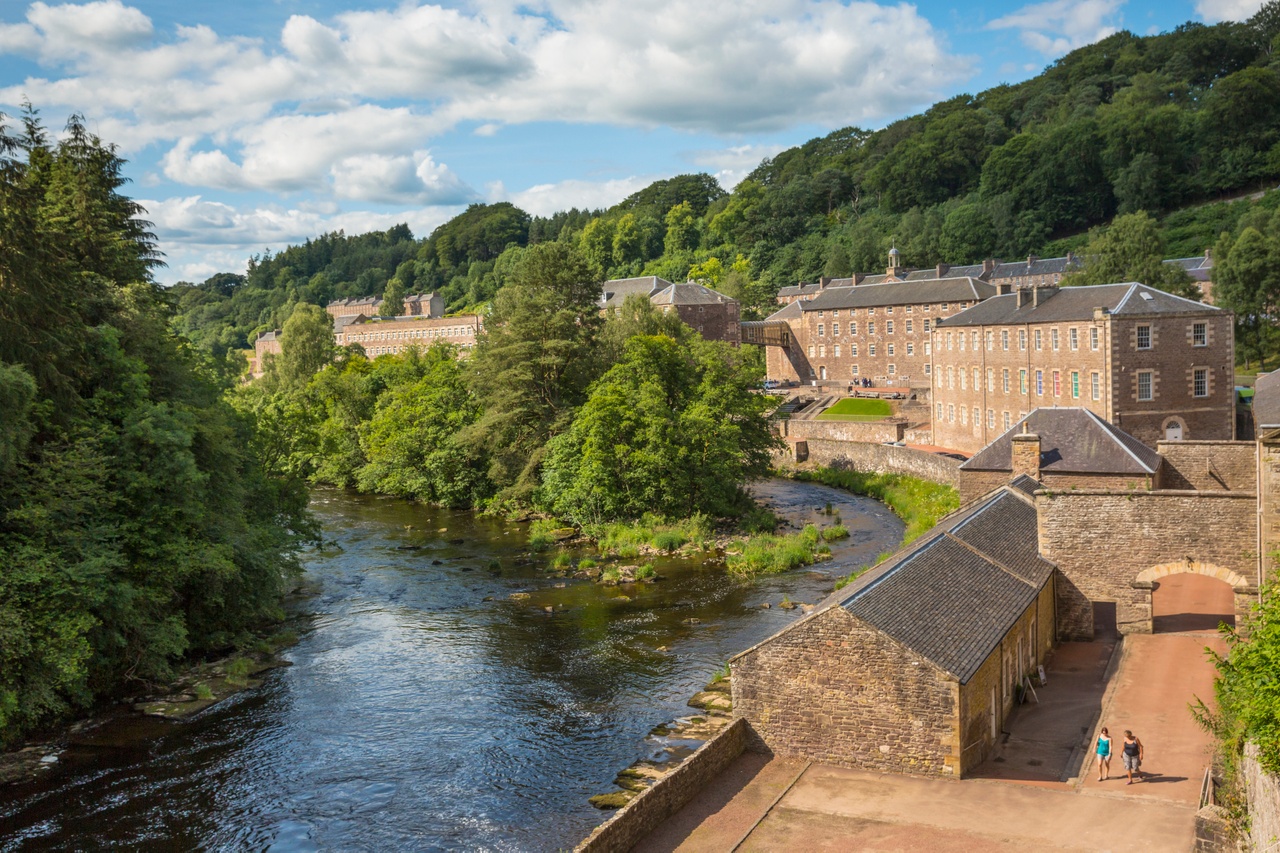
Accommodation
From traditional tenements – Glasgow’s distinctive housing style – to city centre lofts and apartments, grand Victorian villas to modern houses, flats and apartments, there are housing styles and prices to suit every taste and budget. And, being such a compact city, with great transport links, you are never more than a short hop from the city centre action.
if you're just swinging by for a little visit, then you'll also be glad to hear that Glasgow has experienced an impressive growth of hotels around the area, covering everything from budget to boutique.
Fife
Situated in east-central Scotland, The Kingdom of Fife, as it is known, lies between the Firth of Forth and the Firth of Tay and is home to the ancient town of St Andrews.
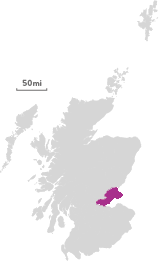
Population: 371,390
Five fascinating facts
| 1. Fife has been voted a 'No 1 outdoor destination' by Scottish Natural Heritage for eight years in a row |
| 2. Falkland Palace was a famous hunting retreat of Mary Queen of Scots, who also played tennis there |
| 3. There is a secret tunnel 500 metres under the River Forth, which was designed to transport coal |
| 4. Fife is the home of golf, with around 50 golf courses, including the famous Old Course at St Andrews |
| 5. The region is home to the airbase, RAF Leuchars, which is the oldest continually operating military air base in the world |
Education
Fife is home to 135 primary schools and 18 secondary schools, and is part of the Curriculum for Excellence. The curriculum aims to ensure children and young people in Scotland develop the knowledge, skills and attributes they need in life.
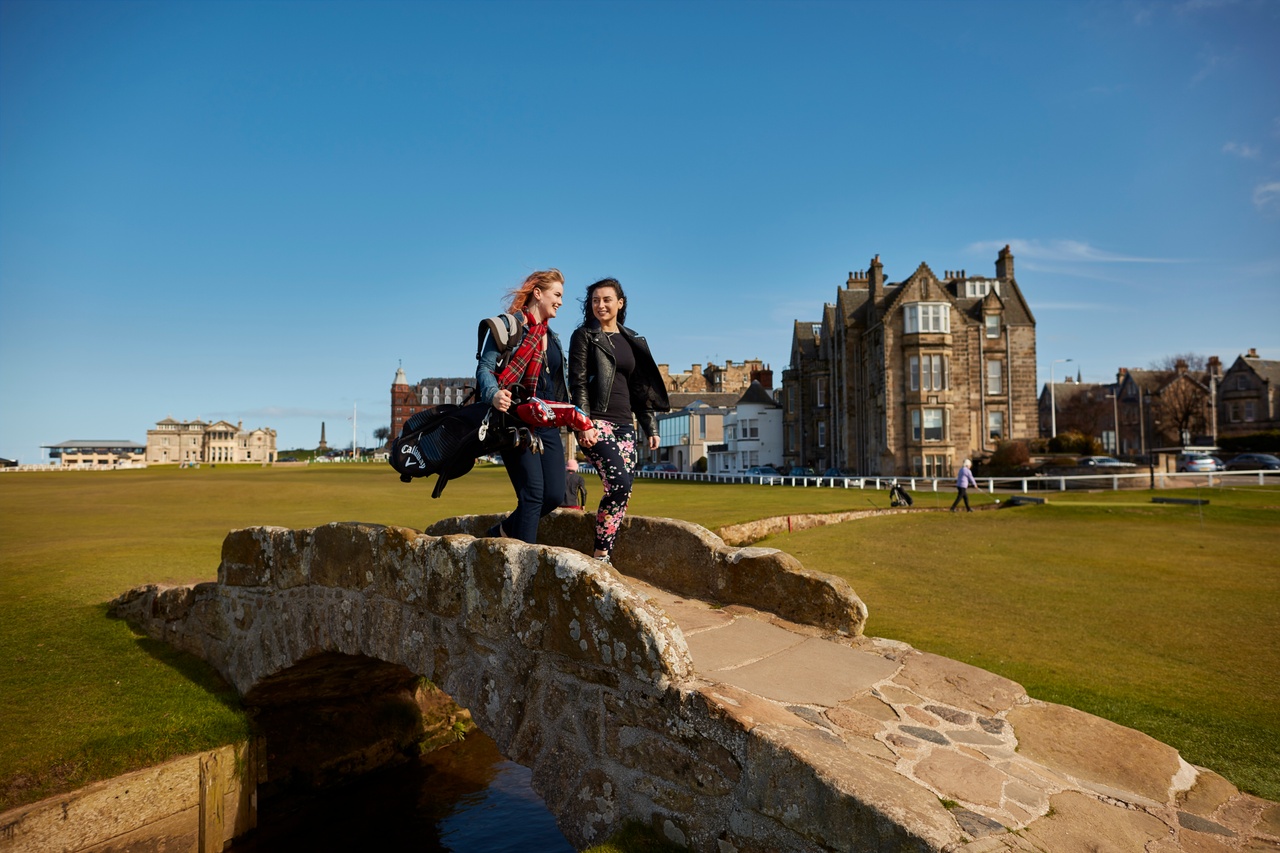
Fife is also well known for having one of the best universities in the world: the University of St Andrews, which was founded way back in 1410 and is one of Scotland’s four ‘ancient universities’. Opportunities extend into Further Education, under Fife College and at the Elmwood Campus meaning that whatever level of education you are looking for, you are well covered.
Find out more about the school system in Scotland
Find out more about universities in Scotland
Local industries
Fife is part of Edinburgh city region’s financial services cluster, and has the greatest concentration of customer service businesses in Scotland, turning over around £500 million every year.
The region also has a very strong tourism market and welcomes hundreds of thousands of visitors each year. On top of this, with direct access to the Firth of Forth and the North Sea beyond, the Kingdom of Fife is perfectly positioned to support green energy markets.
Find out more about working in Scotland
Transport
The area has excellent road and rail networks that are perfectly spread throughout the region. Fife carries part of the M90 motorway and the A90, which take most of the traffic to and from Edinburgh and Perth, and to St Andrews. There is also a Fife Circle Line and railway stations in most major towns, connecting with Dundee and most other major cities across Scotland.
Fife is also well served by a bus network, which will take you to locations all over the area, and down to Edinburgh Airport and the Scottish capital itself. The county’s free ‘Park and Ride’ scheme is also in place here, enabling passengers to safely park their cars and commute via bus, affording quicker, and greener travel compared with car transport.
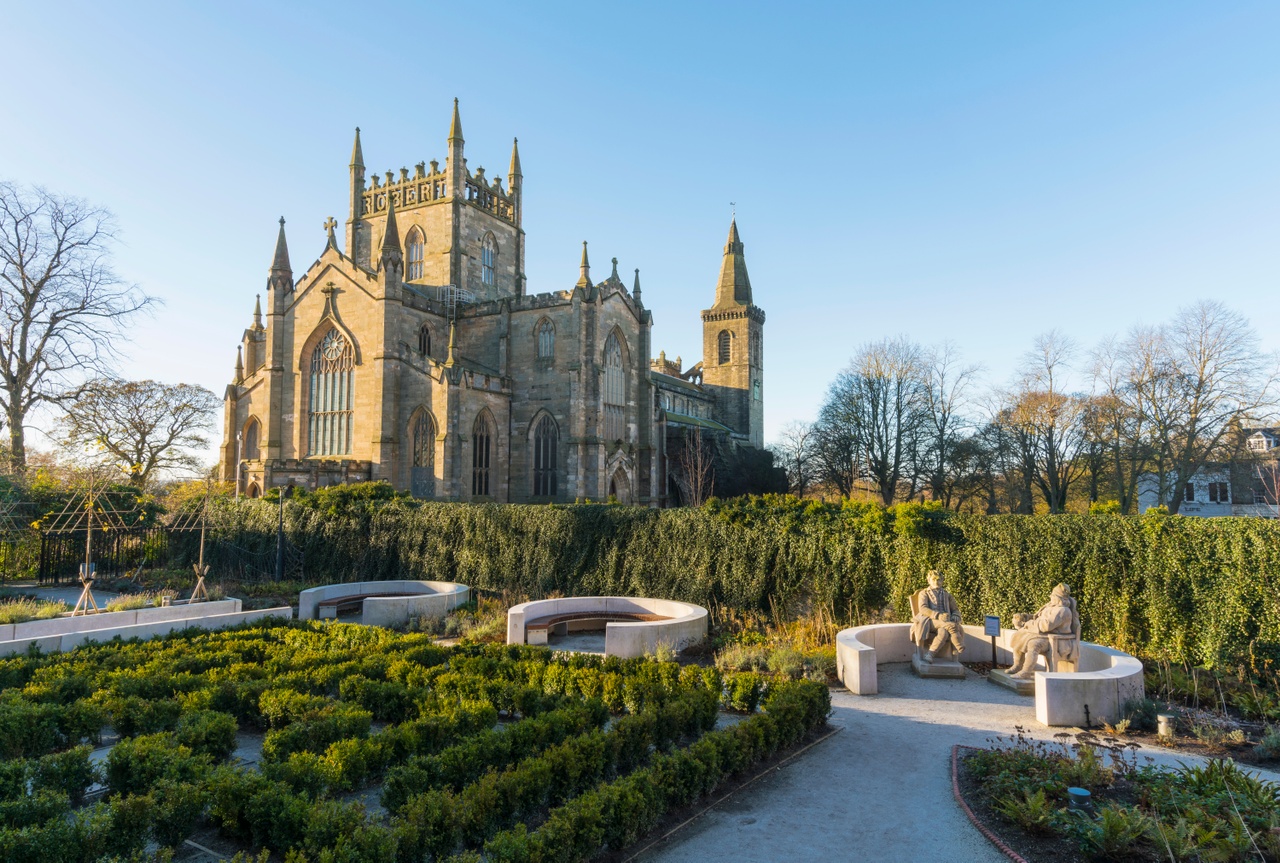
The outdoors
Fife is a Mecca for outdoor activities, unveiling a charming coastline, especially the series of beautiful fishing villages that dot the east coast. The region boasts one of the Lomond Hills, which is just one example of the many places that are brilliant for hikes. The town of St Andrews is obviously world-famous for golf, the sport was invented here and the ‘Old Course' dates back as far as 1552.
St Andrews is also famous for its West Sands beach, which staged a famous scene in the film Chariots of Fire. You can also take a boat trip to the Isle of May, a fascinating island once home to a monastery and now a national nature reserve.
Leisure
Having such a long coastline and expansive countryside, Fife is teeming with activities. Cast your net wide and you could join a sail, try out some bowling in Dunfermline or an adrenalin-filled spin on the Knockhill Racing Circuit.
There is also the historic Falkland Palace to explore and, for those who love wildlife, the Scottish Deer Park. Love fresh fruit? Fife is full of fresh fruit and veg. A great leisure activity, especially for kids, is to pick your own fruit in the summer through a trip to the area’s fruit farms.
Find out more about the outdoors and leisure on VisitScotland.com
Accommodation
Fife has come of age as an affordable option to commute to Edinburgh, Dundee or even Glasgow. Places such as Dunfermline, Kirkcaldy and Culross are within easy reach of Edinburgh. In addition, the county offers rental, purchase and shared homes to suit everyone from students, young professionals, to families and the retired.
Property sales in Fife boomed in 2018 due to its proximity to Scotland’s two principal property hotspots, Edinburgh and St Andrews, and the rejuvenation of Dundee.
Dundee and Angus
Dundee and Angus is situated in east-central Scotland, on the north bank of the Firth of Tay. The region is home to the only V&A Museum of Design outside of London.
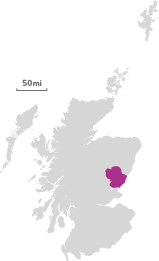
Population: 263,140
Five fascinating facts
| 1. Dundee is the birth place of the Grand Theft Auto series – one of the largest gaming franchises in the world |
| 2. The city is also home to the brand new V&A Museum of Design – the only one of its kind outside of London |
| 3. Kirriemuir – the smallest town in Angus – hosts an annual heavy metal festival called ‘Bonfest’ in honour of AC/DC lead singer Bon Scott, who was born in the town |
| 4. Channel your inner Shakespeare at Glamis Castle in Angus, which was the setting of Macbeth |
| 5. The stadiums of the two professional football clubs in Dundee are actually on the same street, and are just 200 yards apart |
Education
Dundee and Angus is home to 105 primary and secondary schools, with an excellent spread across the entire region. Included in this is the very ancient High School of Dundee, which dates back as far as the 13th century. This region also has two universities: Abertay University and The University of Dundee.
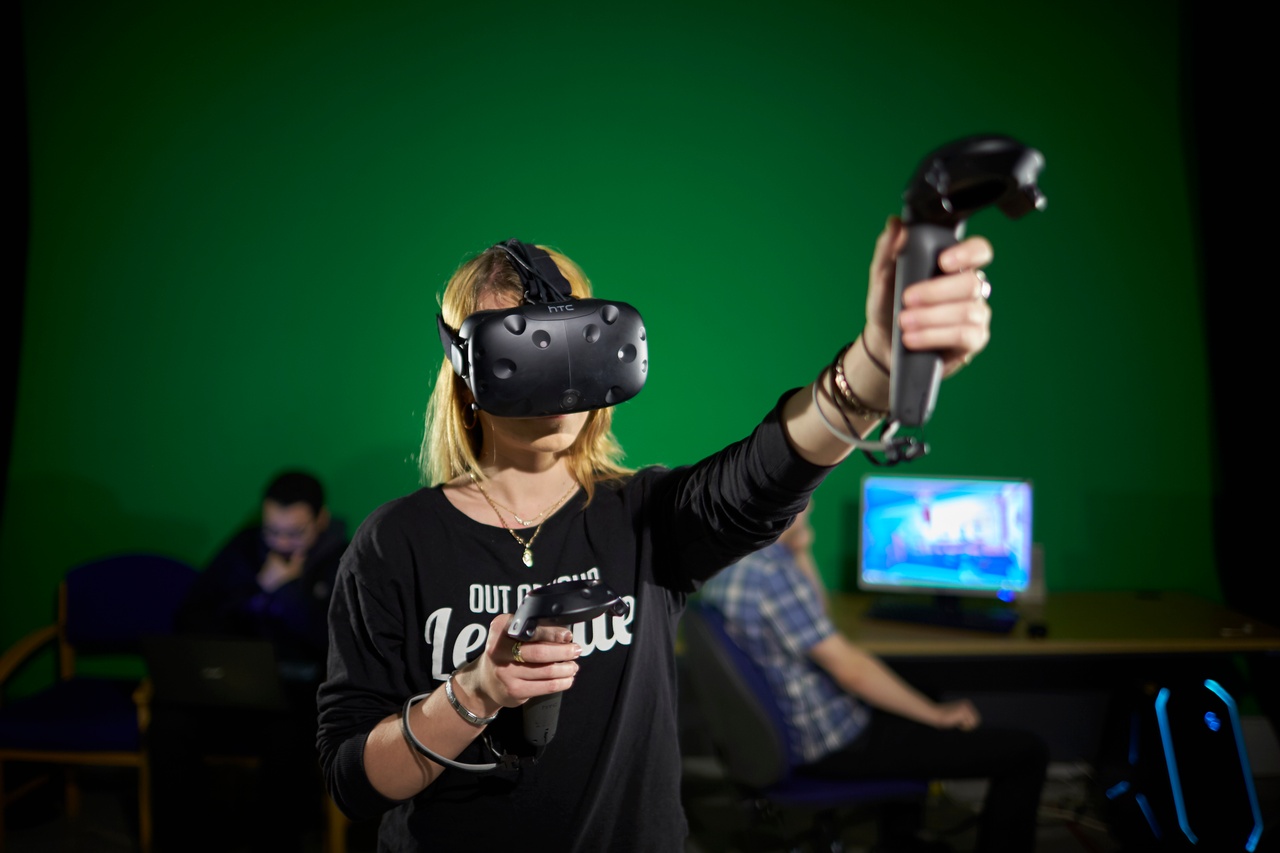
Abertay University is especially respected for its computing and creative technology courses, particularly in computer games technology and is where the makers of Grand Theft Auto started out. It was also the first university in the world to offer a degree in ethical computer hacking.
Find out more about the school system in Scotland
Find out more about universities in Scotland
Local industries
Video game development is one of the biggest industries in this area, and has been for decades now. The region is the birthplace of what is now Rockstar North, creators of the mega-hit series, Grand Theft Auto. This is by no means the only example with many other game development companies including Outplay Entertainment, the UK’s largest mobile games developer.
If technology isn’t your forte, the region is also home to D.C. Thomson, a publishing company with more than 100 years of history in everything from broadsheet newspapers to some of the UK’s best-loved comics. The surrounding Angus region also has a huge agricultural industry and is home to the world-famous Aberdeen-Angus beef.
Find out more about working in Scotland
Transport
This region is well served by an extensive network of bus routes, meaning that if you prefer a rural lifestyle, you still won’t have too many problems getting into the heart of the city. Dundee, as well as most towns in Angus, will also be served by a regular train service, giving you even more travel options. If travelling by car, the A90 road runs right through the heart of Dundee and connects as far south as Edinburgh, and as far north as Fraserburgh.
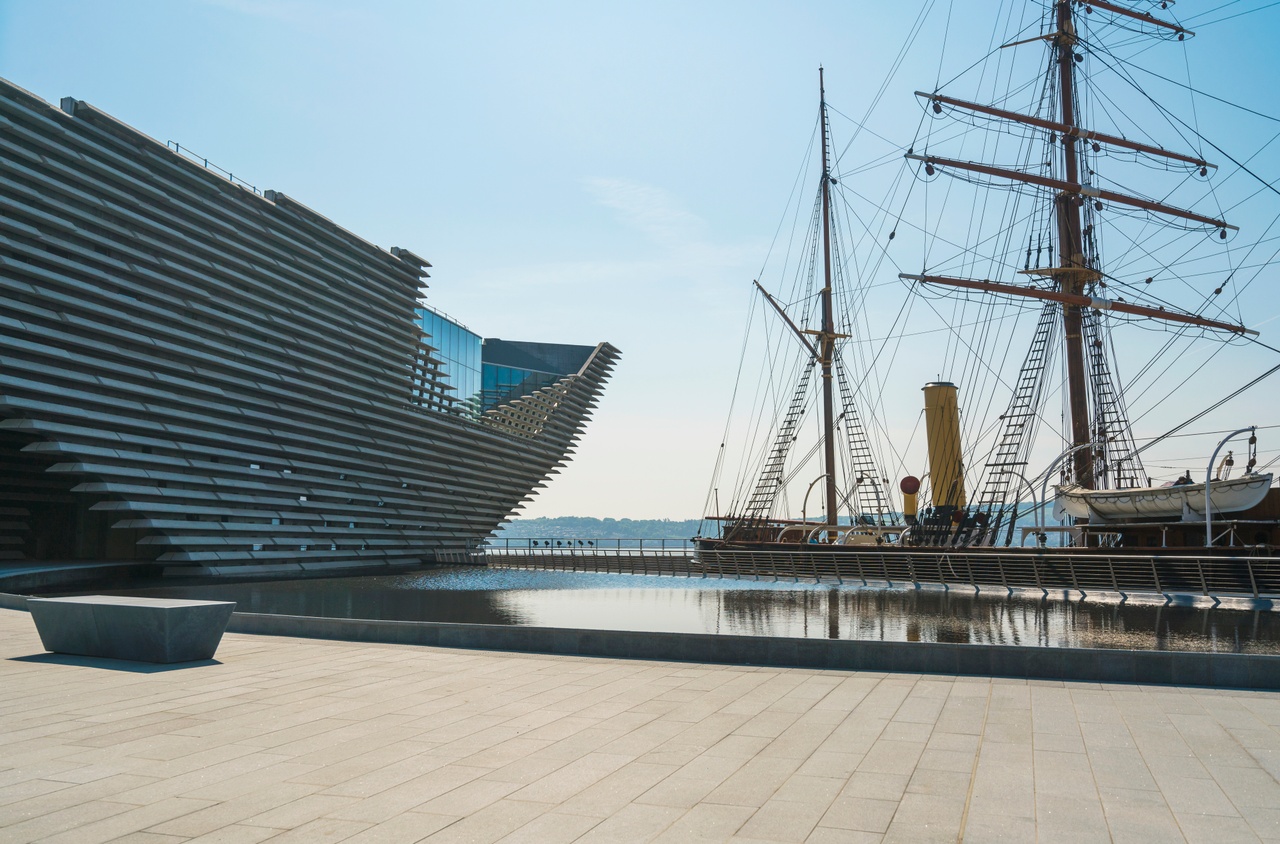
The outdoors
The city of Dundee is located on the north coast of the Firth of Tay, which leads out into the North Sea, so although it might be a little too chilly for a swim, it does provide some beautiful seaside walks. Heading further inland, you can find Dundee Law - an excellent hill walk to the summit of an extinct volcano that was central to Dundee’s defences for thousands of years.
Outside of Dundee, you are spoilt for choices, from the tall mountains and picturesque glens of the north, across the forests of areas like Strathmore, and down to the stunning sea cliffs in the south. You will definitely never be short of sights to keep you occupied.
Leisure
All throughout Dundee and Angus, you’ll be able to find a huge array of different leisure activities to keep people of all ages busy. Dundee itself is known by the tagline ‘One city, many discoveries’ and you’ll certainly be able to discover plenty of cool things to do. Chief amongst these is the RSS Discovery, the famous ship that took Captain Robert Scott on his expedition to the Antarctic more than 100 years ago.
Just a stone’s throw from there you will find the brand-new V&A Museum of Design, the only one of its kind outside of London and a must-visit attraction. If history is more your thing, you can also head to Arbroath, which is known as ‘the birthplace of Scotland’. It was here in 1320 that the Declaration of Arbroath was signed, marking Scotland’s status as an independent nation.
Find out more about the outdoors and leisure on VisitScotland.com
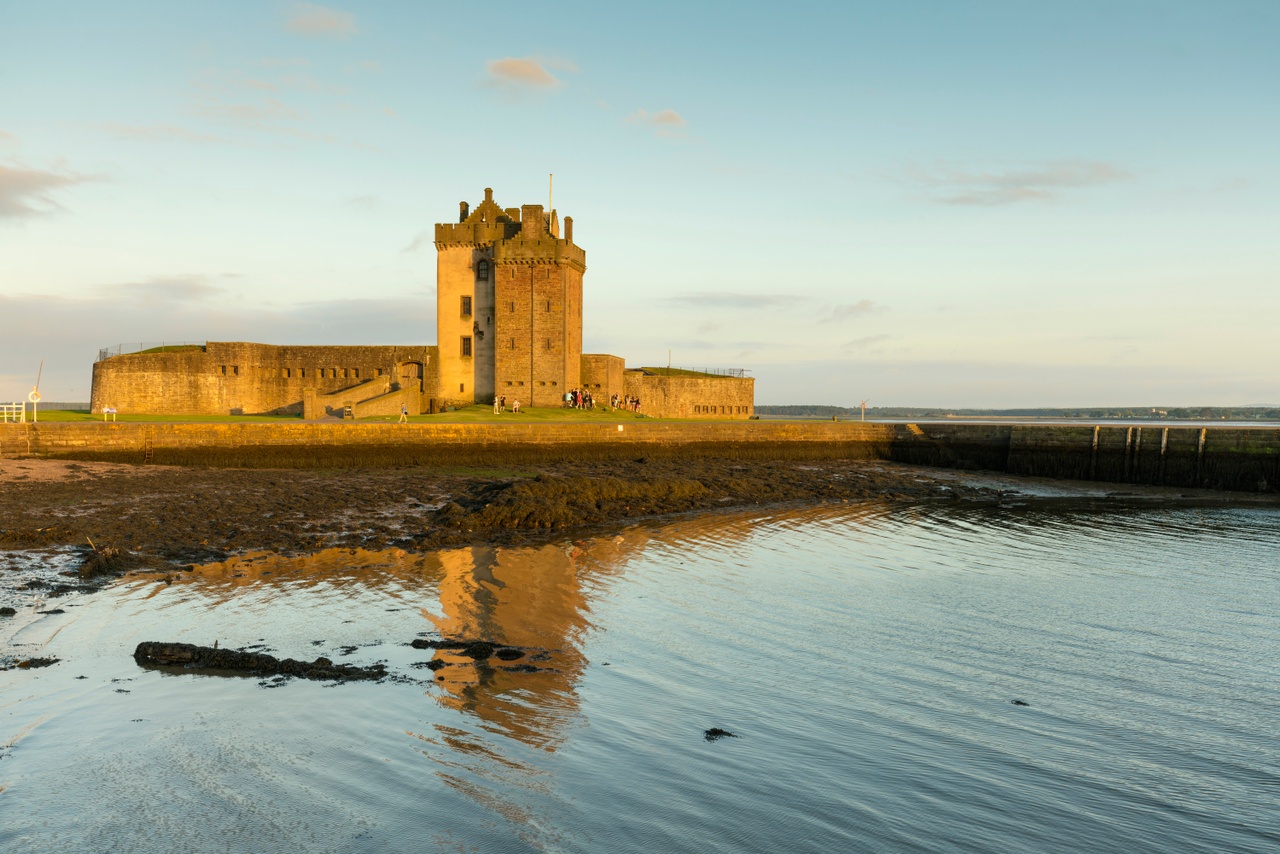
Accommodation
As with most major cities, the closer you live to the town centre, the more you can expect to pay. However, those excellent transport links mean that even if you choose to live in the surrounding areas, you’re only a short journey back into the heart of the city. The centre of Dundee has undergone a period of regeneration in recent years, meaning that there are many stylish an modern accommodation options to sit alongside the more traditional houses and flats.
If you prefer a quieter existence, you may be better placed in one of the quaint towns and villages throughout Angus. What these little places lack in size, they more than make up for in character.
Dumfries and Galloway
Located in the south west of Scotland, Dumfries and Galloway shares a border with England to the south. This largely rural area is also home to the UK's first Dark Sky Park.
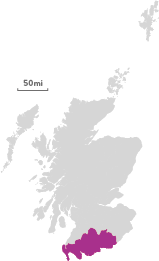
Population: 145,770
Five fascinating facts
| 1. The village of Wanlockhead is the highest village in Scotland, at a height of more than 1500 feet above sea level |
| 2. The region is home to the Western world’s first Tibetan Buddhist Monastery, which was founded in 1967 – it even has its own Buddhist tartan |
| 3. The town of Wigtown is Scotland’s National Book Town, and hosts a world-famous literary festival every autumn |
| 4. The region is home to the UK’s first Dark Sky Park, where low light pollution means that more than 7000 planets and stars are visible |
| 5. Kirkpatrick MacMillan invented the bicycle in the tiny village of Keir Mill in 1839 |
Education
Dumfries and Galloway is home to 120 primary and secondary schools, spread out across the region. If you choose to call this region home, you can also benefit from satellite campuses of three of Scotland’s 19 universities.
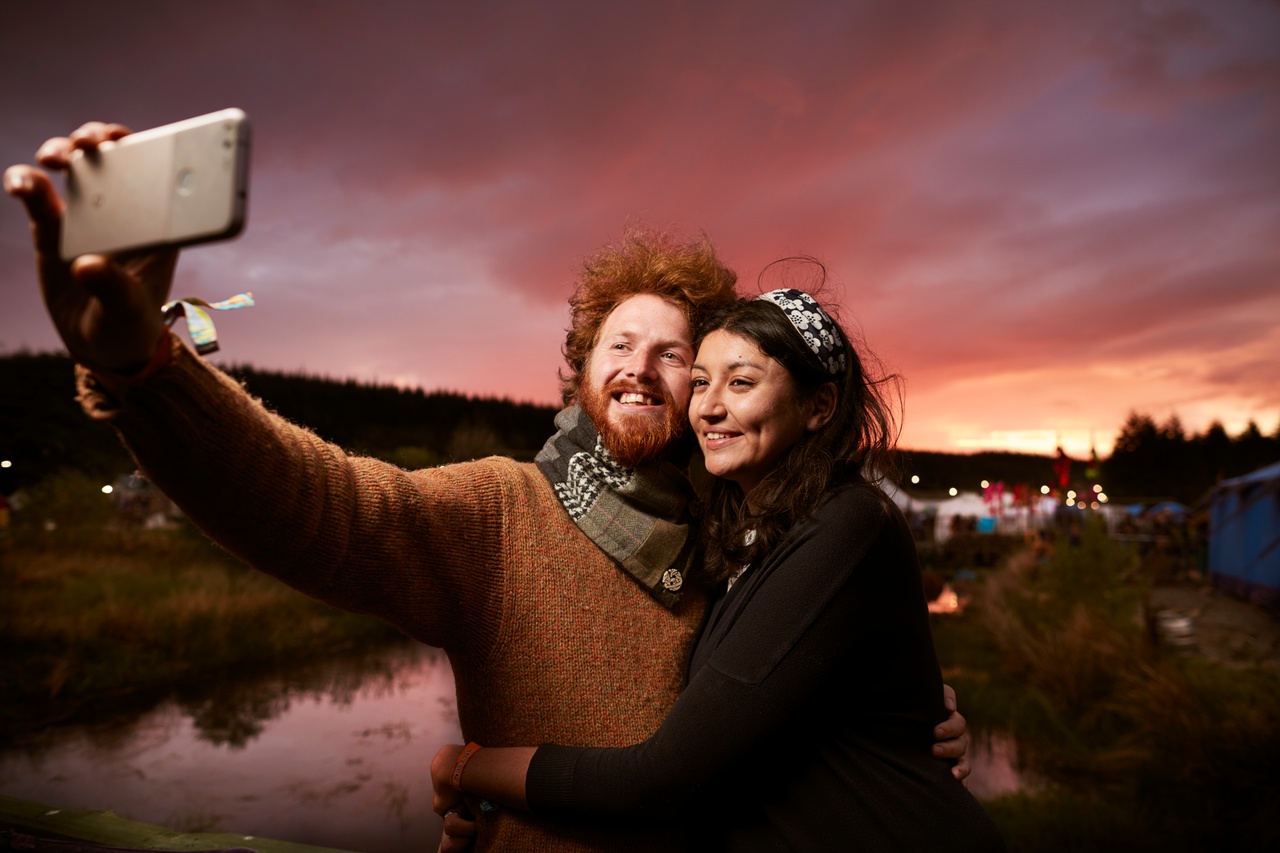
The University of Glasgow, the University of the West of Scotland and Scotland’s Rural College all have campuses in Dumfries and Galloway, meaning you can continue your higher education from the comfort of your country home. The region is also home to Dumfries and Galloway College, which welcomes over 9,000 students each year in subjects ranging from business and computing to construction and engineering.
Find out more about the school system in Scotland
Find out more about universities in Scotland
Local industries
Unsurprisingly, given the rolling hills and glens, agriculture is one of the largest industries in this region. In fact, agriculture accounts for a whopping 70% of the land mass in Dumfries and Galloway. Another key industry in this area is forestry, with woodland covering another 25% of the area of this region.
With all this incredible agricultural space in abundance, it is perhaps unsurprising that another key industry in this region is the food and drink industry. It plays a massive role in this area, accounting for 14,000 employees in Dumfries and Galloway, with an annual turnover of £1.3 billion and hopes to double this in the next decade.
Find out more about working in Scotland
Transport
Several main roads as well as a motorway (A74(M)) are spaced throughout the region, meaning that if you have a car; it is very easy to get around. As Dumfries and Galloway is predominantly a rural area, transport links are not as strong as most city centres, but regular bus and train routes do still operate right through the region.
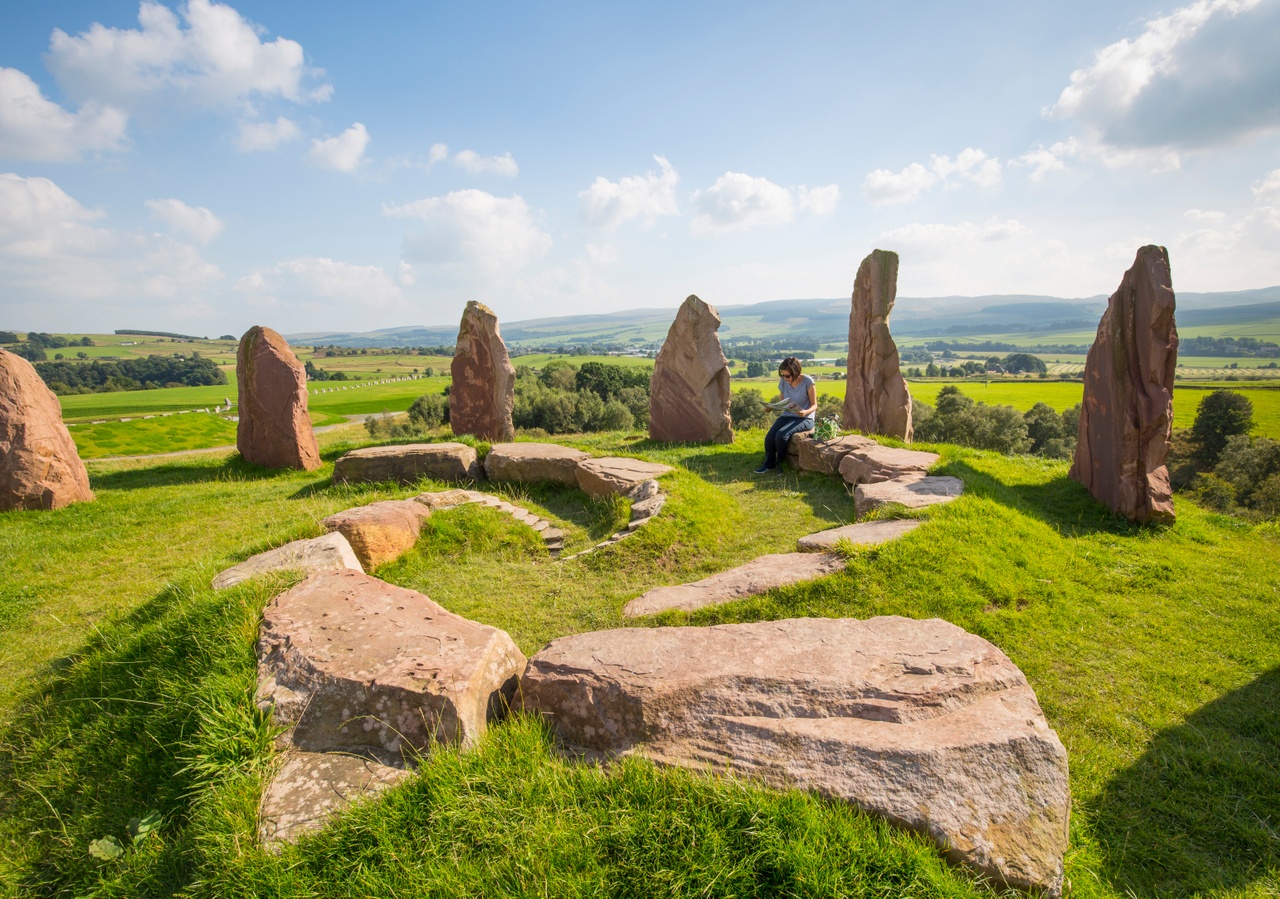
Dumfries and Galloway benefits from several different bus companies and has seven railway stations, which are connected to main transit links, making it easy to get in and out of larger cities like Glasgow. Dumfries and Galloway is also home to two seaports, which operate ferries across the Irish Sea to Northern Ireland.
The outdoors
If you love outdoor activities, then Dumfries and Galloway is definitely right for you. If mountain biking is your thing, then you’ll be pleased to know the region is home to five of the seven world-class ‘7Stanes’ mountain biking routes. If you prefer hill walking, you can take your pick from the Moffat Hills, Lowther Hills, Galloway Hills, or plenty more.
The region is also the starting point for the ‘Southern Upland Way’, a 210 mile-long coast-to-coast trail along southern Scotland. The long Solway Firth coastline also provides plenty of options for everything from fishing to water sports like kayaking and rafting. This is an area that is just bursting with stunning scenery – so much so that it is home to not one, but three national scenic areas, which are designated as areas of scenic beauty.
Leisure
Undoubtedly, the star (pun intended) of Dumfries and Galloway’s leisure activities is the Dark Sky Park. Galloway Forest Park is the UK’s first Dark Sky Park, and visiting on any night can allow you the chance to see more than 7000 stars and planets with the naked eye.
The area is also home to some truly spectacular festivals and events. Each year, the town of Dumfries plays hosts an 11-night Robert Burns festival called the ‘Big Burns Supper’. Some of the biggest names in comedy, cabaret, music and entertainment all descend on this small town for a heady mix fun, food, drink and frivolity.
In addition, there is the town of Wigtown, which holds the title of Scotland’s National Book Town, and hosts an incredible book festival every autumn. This is the perfect opportunity to wander around this small town and soak up some of the best literary works from Scotland and around the world.
Find out more about the outdoors and leisure on VisitScotland.com
Accommodation
Dotted throughout Dumfries and Galloway are nearly 80 towns, villages and hamlets meaning that you will have plenty of options to choose from if you decide to call this region home. The larger towns, like Dumfries, Gretna, Stranraer and Annan will have a wide range of accommodation options that you can expect to find in most modern towns, but if you prefer a rural lifestyle, some of the smaller villages may be just what you are looking for.
Scottish Borders
Located in the south east of Scotland, the Scottish Borders is a hilly and largely rural area that takes its name from the fact that it lies on the border between Scotland and England.
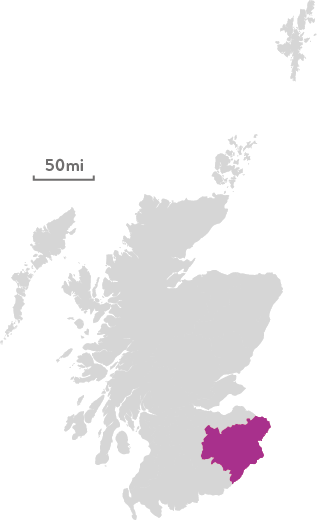
Population: 116,820
Five fascinating facts
| 1. The Borders boasts four magnificent ruined Medieval abbeys which date back to the 12th century: Jedburgh, Melrose, Kelso and Dryburgh |
| 2. The Borders’ textile industry supplies wool and cashmere to the world’s most iconic fashion houses including Chanel and Dior |
| 3. Every year the region plays host to the world’s oldest and largest equestrian festival: The Common Ridings |
| 4. Sir Walter Scott built his beloved home of Abbotsford on the banks of the River Tweed |
| 5. The famous Rugby Sevens game was invented in the Borders town of Melrose in the 1880s |
Education
There are 72 primary and secondary schools located throughout the Scottish Borders, so wherever you choose to settle you can be assured a local school is nearby. Among the many high-performing state schools in the area are Eyemouth High School, Galashiels Academy, Hawick High School and Peebles High School.
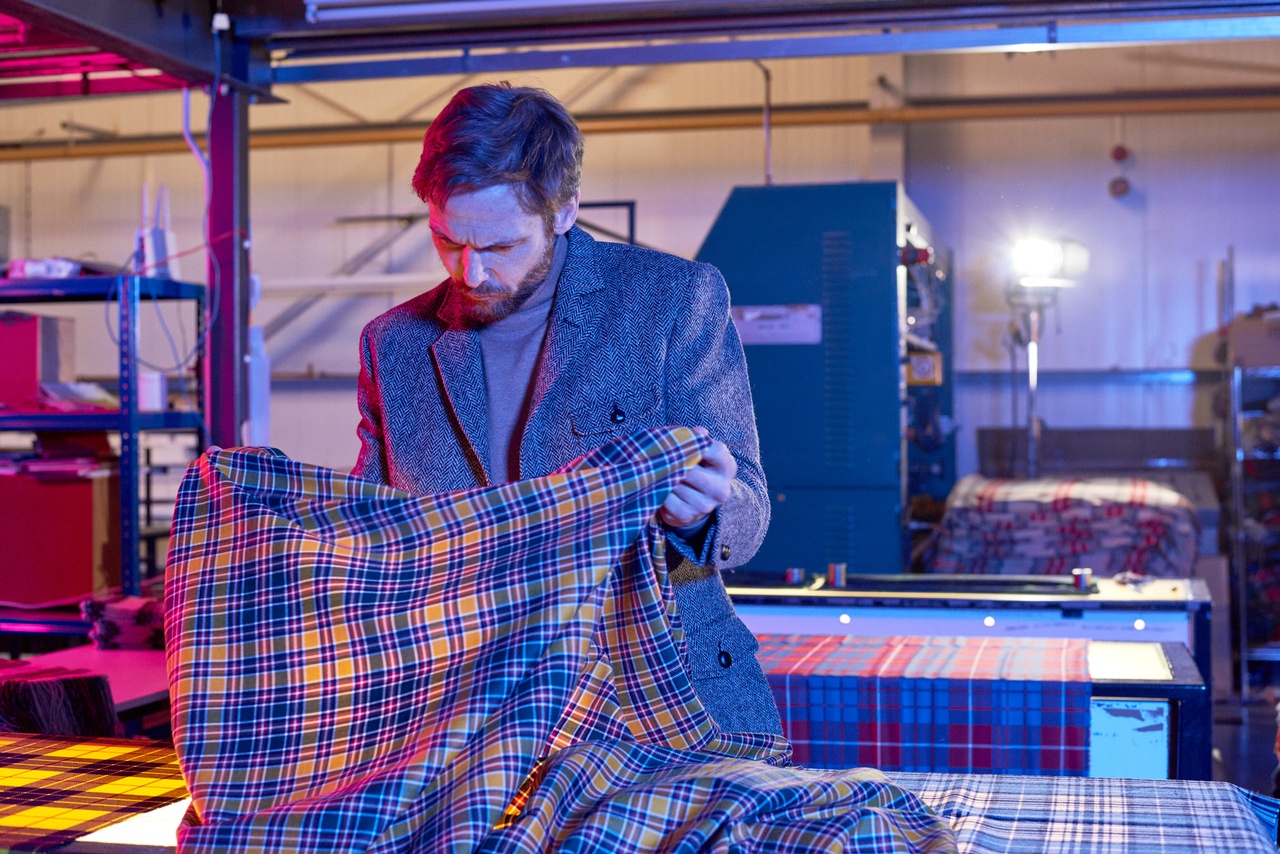
Further and higher education courses are available from Borders College, with four campuses spread across the region, while the Borders Railway allows local students quick and easy access to the many excellent tertiary institutions located in Edinburgh, including Edinburgh Napier University and the world-renowned University of Edinburgh.
Find out more about the school system in Scotland
Find out more about universities in Scotland
Local industries
The textile industry in the Scottish Borders goes back centuries and it remains a major contributor to the local economy, accounting for thousands of jobs. This industry looks set to continue to thrive with a textile centre of excellence due to launch at Hawick High School, which aims to raise future generations of textile industry artisans and professionals.
The region’s other major industry is agriculture, which benefits from its unspoiled natural landscape and reputation for quality and innovation. In addition to its healthy number of industry cooperatives and a number of successful independent suppliers, it also boasts some of the best quality assured beef and lamb raised in Scotland.
Find out more about working in Scotland
Transport
Getting around the Scottish Borders is simple. The quiet country roads and lanes make driving a pleasure, while excellent public transport links ensure getting from A to B is positively stress-free. Three major trunk roads pass through the region: the A1, A7 and A68, while the signposted Borders Historic Route runs between Carlisle and Edinburgh and encompasses some of the region’s finest scenery.
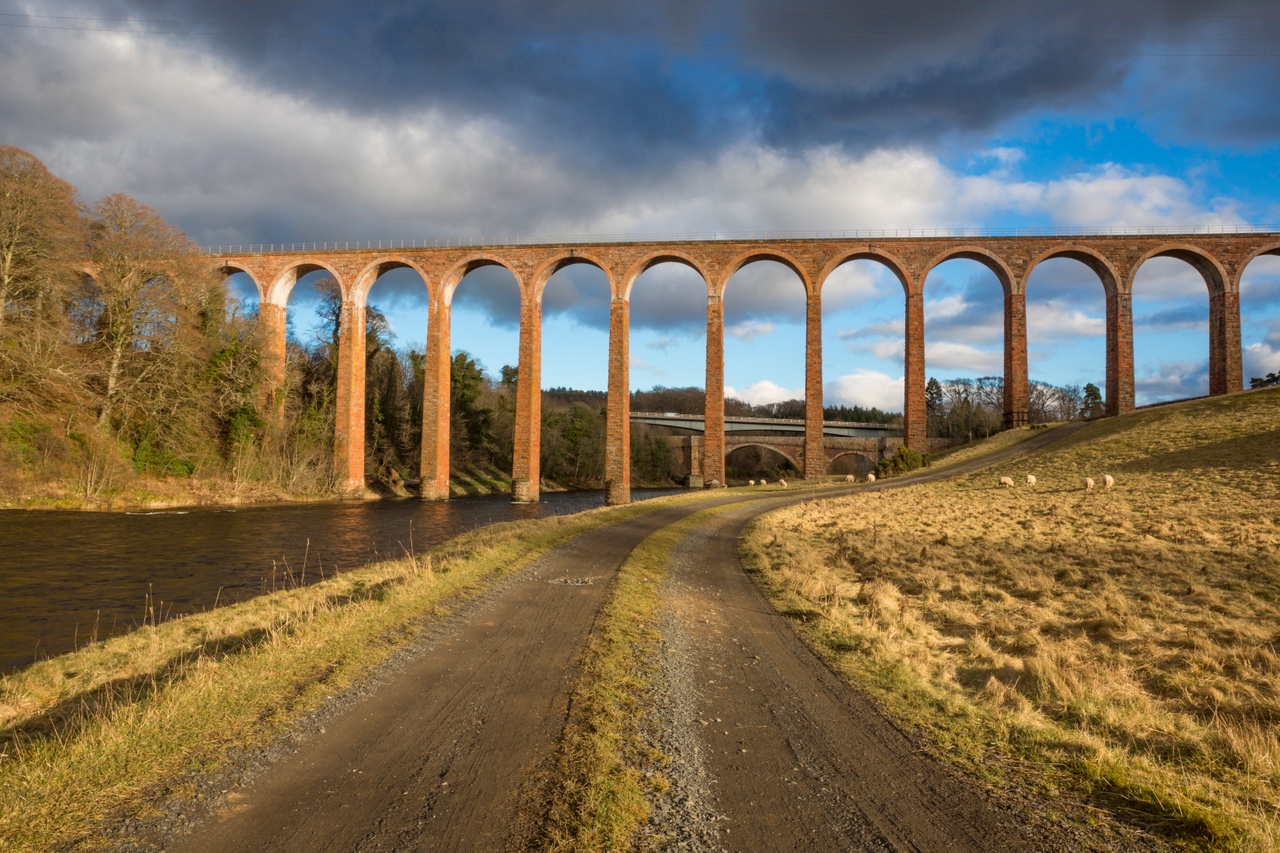
The region’s main bus services are Borders Buses and Perryman’s Buses, both of which connect all of the major towns and villages and provide services to Edinburgh. Meanwhile the Borders Railway offers a direct link between Tweedbank in the Borders and Edinburgh Waverley, with a total journey time of under an hour.
The outdoors
With its gently undulating hillsides and tranquil valleys, the Scottish Borders is a place of captivating natural beauty. And with more than 1,500 miles of dedicated walking routes – including six national walking trails – the best best way to experience it is on foot.
From the 840-metre summit of the mighty Broad Law, to the famous Scott’s View vantage point overlooking the Tweed Valley and the secluded coves and crystal-clear waters of the Berwickshire coast, discover a region ripe with stunning scenery.
Leisure
The Scottish Borders is made for outdoor adventurers. Anglers come from around the world to try their luck on the salmon-teeming Tweed and Teviot rivers, while Coldingham Bay is a magnet for surfers and sea kayakers. There are also over 21 golf courses as well as two ‘7stanes’ mountain biking centres at Glentress and Innerleithen.
From birdwatching in the 3,000-acre Hirsel Country Park to hitting the snow-covered slopes of the Lammermuir Hills, the choice of activities is huge. Throughout the year, the region also hosts a variety of events, including the Borders Book Festival in Melrose, the Innerleithen Music festival and horse racing highlights like Buccleuch Cup Day, to name just a few.
Find out more about the outdoors and leisure on VisitScotland.com
Accommodation
The proximity of the Scottish Borders to Edinburgh, made even more accessible thanks to the aforementioned Borders Railway, as well as the wide range of schooling options available, makes the region a popular choice among commuters and families. Properties located in or around towns along the Borders Railway Line, as well as the larger market towns and neighbouring developments, are the most highly sought after. However, there are plenty more options located throughout the wider region, particular for those seeking a more rural or costal locale with easy access to local amenities.
Ayrshire and Arran
Ayrshire and Arran is located on the south west coast of Scotland, on the shores of the Firth of Clyde. The Isle of Arran is perfectly described by those who visit as 'Scotland in miniature'.
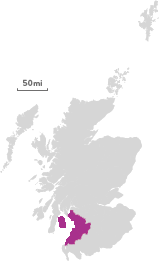
Population: 365,450
Five fascinating facts
| 1. Robert Burns, Scotland’s National Bard, was born, and spent most of his life, in Ayrshire. You can still visit his home in Alloway as well as explore the Robert Burns Birthplace Museum |
| 2. Prestwick Airport is the only part of Britain that Elvis Presley ever set foot in - his plane stopped to refuel on 3 March 1960 |
| 3. Scotland’s former First Minister, Nicola Sturgeon, is from Irvine |
| 4. An apartment in Culzean Castle was given to former US President Dwight D. Eisenhower in recognition of his role during WWII |
| 5. The town of Kilmarnock is the birthplace of world-famous whisky brand, Johnnie Walker |
Education
There are 175 primary and secondary schools across Ayrshire and all of these are well spread out across the region, meaning that no matter what part of the region you choose to stay in, there will be a school nearby. As well as this, the island of Arran also has its own dedicated high school, meaning that there is no need to travel off the island for education, which was the case until the 1940s.
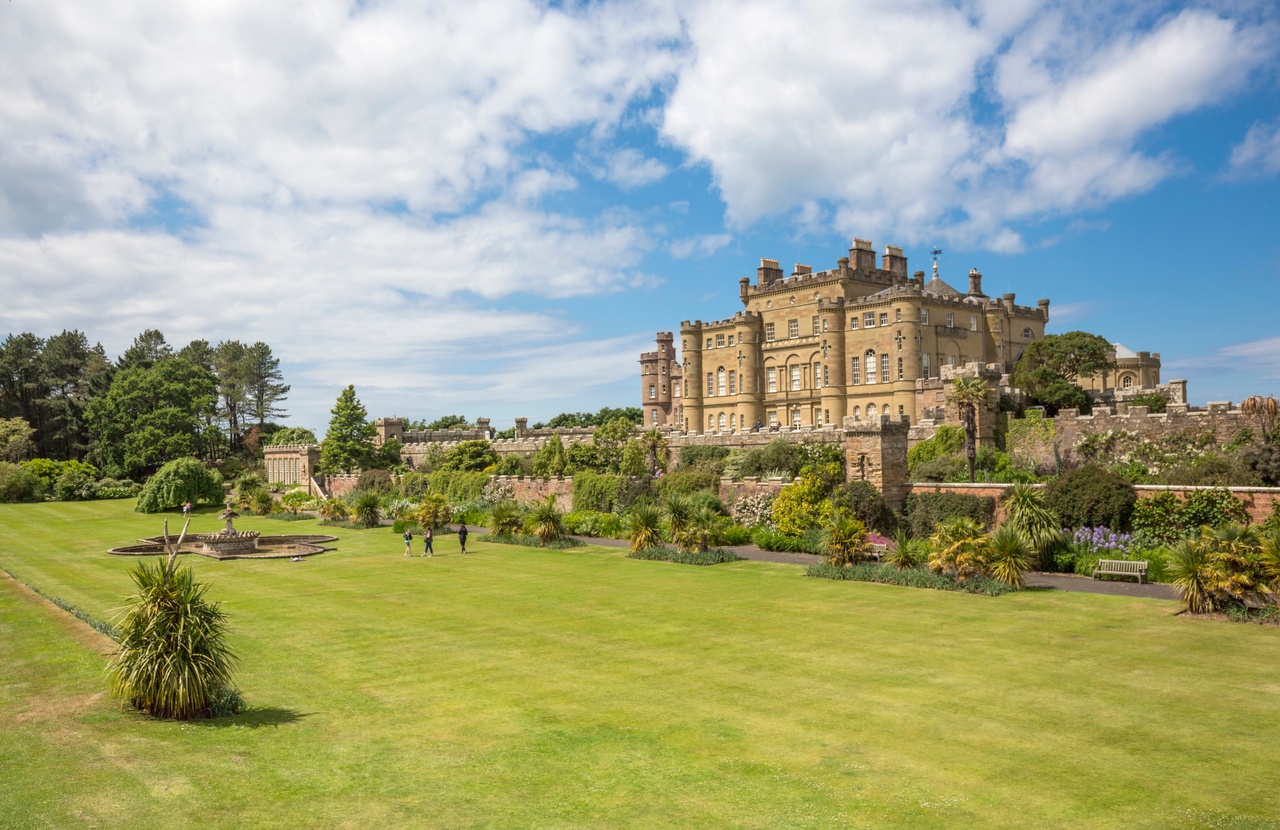
In terms of further education institutions, there is a great choice in further and higher education. Ayrshire College has multiple campuses throughout the region offering a variety of courses to more than 14,000 students. As well as this, the region benefits from being home to the University of the West of Scotland’s Ayr Campus, offering undergraduate and postgraduate degrees. Scotland’s Rural and Agricultural College Ayr Campus also has multiple easy, quick, travel routes into Glasgow.
Find out more about the school system in Scotland
Find out more about universities in Scotland
Local industries
Agriculture is one of the largest industries in Ayrshire, as the region is one of the most agriculturally fertile places in all of Scotland. Potatoes and other root vegetables are grown in abundance throughout the region, which is also known for its pork products. As well as this, Ayrshire produces an abundant source of summer berries such as strawberries and raspberries.
On the Isle of Arran, the main industry is tourism, with many people keen to explore the island best known as ‘Scotland in miniature’. Alongside this, hospitality is also a major contributor to jobs in the area. The Auchrannie Resort, which contains two hotels, three restaurants, two leisure complexes and an adventure company, is one of biggest employers on the island.
Find out more about working in Scotland
Transport
The entire region is well serviced by motorway and main roads, making it easy for you to get around by car. There is also a regular bus service offered by Stagecoach Buses, which operates throughout the region. Reaching the Isle of Arran is also easy thanks to two ferries that operate between Ardrossan on the mainland and Brodick on Arran.
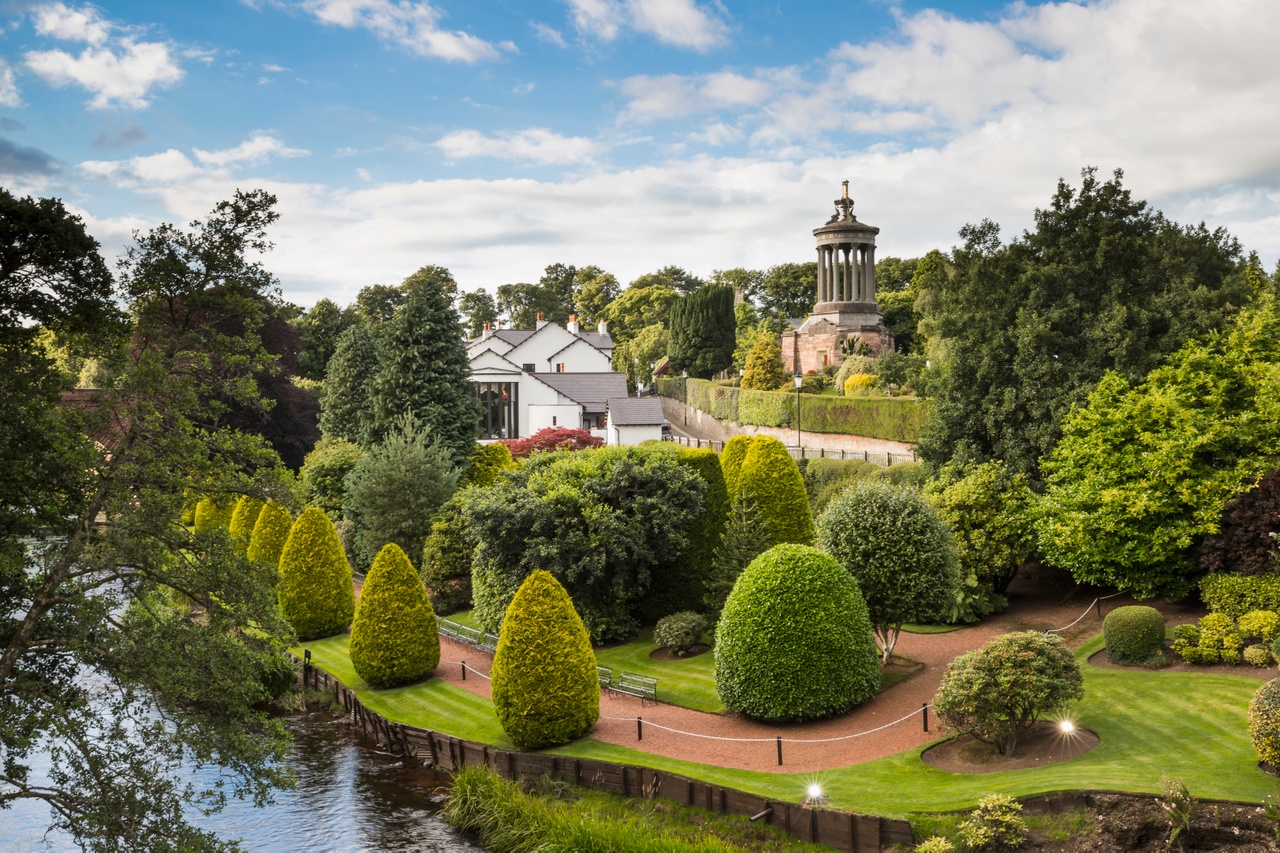
Glasgow Prestwick Airport is located in Ayrshire, offering flights to the rest of the UK and to Europe. The region is well served by trains and buses so it’s very easy to travel between towns and villages as well as Scotland's cities, with Glasgow being the closest. There is a regular ferry service to the islands of Arran and Cumbrae as well as many local cycle routes.
The outdoors
Ayrshire has a stunning coastline to explore, with beaches and views right across the Firth of Clyde to the isles of Arran and Cumbrae. Inland, rolling countryside makes way for stunning trails such as the River Ayr Way and there are plenty of activities to experience from treetop trails to paddleboarding. To the south, the region shares the Galloway and Southern Ayrshire Biosphere with Dumfries and Galloway, which is the first UNESCO Biosphere in Scotland.
Leisure
History buffs are in for a real treat in this region, as it is the birthplace of two of Scotland’s most famous sons – Robert the Bruce and Robert Burns. Take a trip to the town of Alloway, just outside Ayr, and you can visit the Robert Burns Birthplace Museum and explore the cottage he was born in. Further south, in the town of Maybole, you will find the ruins of Turnberry Castle, which is believed to be the birthplace of Robert the Bruce. The castle was ordered to be destroyed by Robert back in 1310, to prevent it falling into the hands of enemy English forces. To the east you will find Dumfries house. This stately home is one of Britain's most beautiful and it houses an impressive collection of 18th century Chippendale furniture.
Ayrshire and Arran is also among the best places in the UK for water sports, with everything from windsurfing to scuba diving on offer. If golf is more your thing, you’ll be pleased to hear that there are almost 50 courses in this region, including three championship venues.
Find out more about the outdoors and leisure on VisitScotland.com
Accommodation
The average house price in Ayrshire is £134,425 – this is around £14,000 below the Scottish national average. There is an active rental market across the region, so finding your perfect home won’t be a challenge.
Argyll and Bute
Located on the west coast of Scotland, the Argyll and Bute region is made up of a stretch of mainland Scotland as well as 23 inhabited islands.
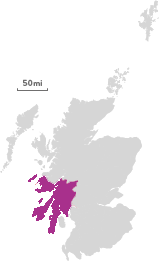
Population: 62,080
Five fascinating facts
| 1. The region has been immortalised in pop culture by the 1977 hit song "Mull of Kintyre" by Paul McCartney's band, Wings |
| 2. There are over 1500km of biking, walking and kayaking trails. |
| 3. There are over 3000 miles of coastline in the region, which is approximately the same as the whole of France. |
| 4. Despite being only 25 miles in length, the island of Islay is home to nine whisky distilleries – and at one point, there were 21! |
| 5. Islay’s smaller neighbour, the Isle of Jura also has a distillery. The island was also home for George Orwell in the late 1940s, where he completed one of his most famous novels, 1984. |
Education
There are 88 primary and secondary schools across the Argyll and Bute region.
Though larger towns - such as Campbeltown, Dunoon, Lochgilphead and Oban - have large schools, in more rural areas and on islands, schools may only have a small number of pupils.
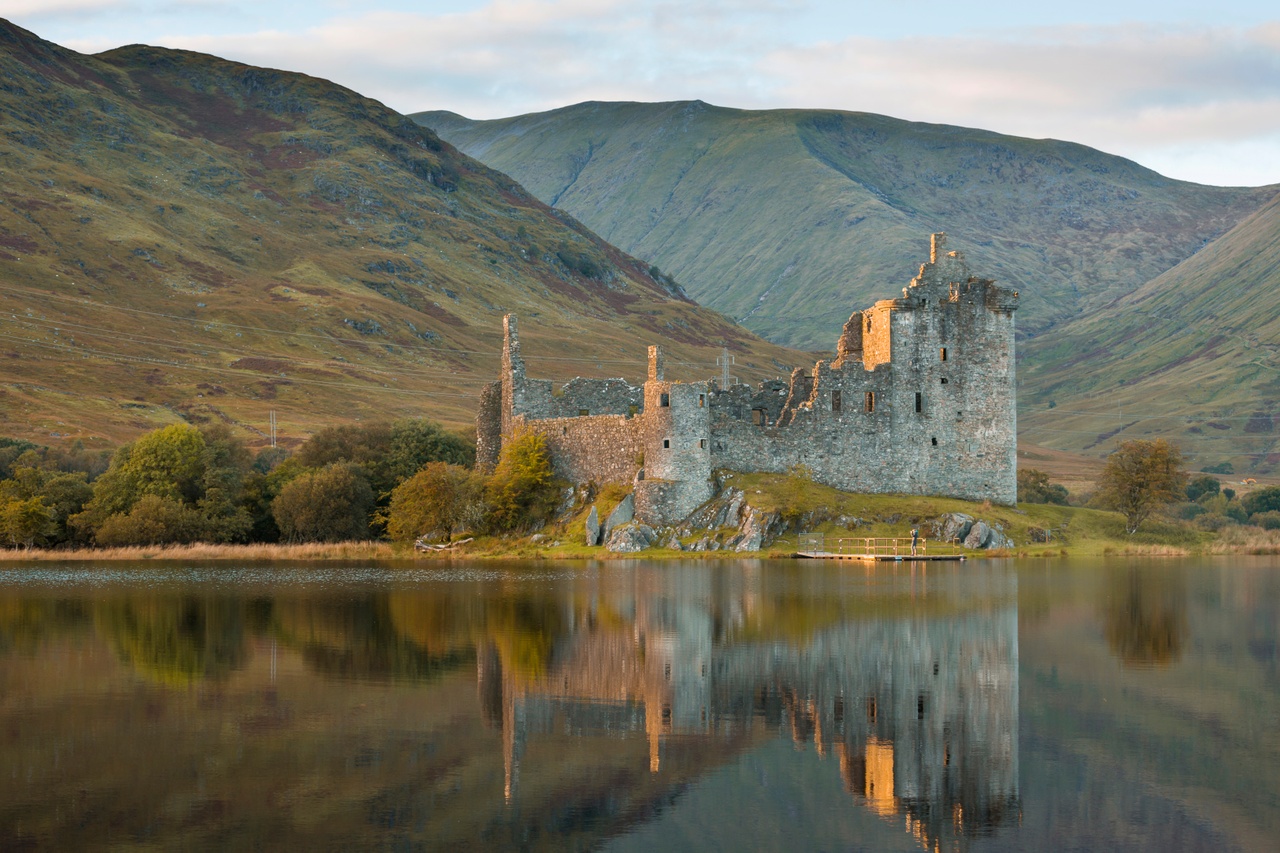
The region is also home to multiple learning centres of the University of the Highlands and Islands. This university offers a range of courses across all subjects, including specialist courses in local leading industries such as marine research and outdoor pursuits. You can study everything from undergraduate degrees through to postgraduate studies.
Find out more about the school system in Scotland
Find out more about universities in Scotland
Local industries
Tourism is the largest employer in the region. 25% of all private sector jobs are in this industry. This includes work in conservation and the historical environment in iconic locations such as Inveraray Castle. Throughout history, this region has been a popular choice among Scots for their holidays. Today, this long tradition continues with locals and visitors enjoying the sights.
As well as tourism, fishing and aquaculture is another major industry. This is understandable given the number of islands and lengthy coastline. This region also offers excellent opportunities in food and drink, agriculture, forestry, education and marine research.
Find out more about working in Scotland
Transport
An extensive road network cuts across Argyll and Bute, easing car access to the most rural parts of the region and its islands. You can also get around the area by bus, and regular train services also travel throughout the mainland section of this region. If you fancy trying something a little different, you can fly from Oban to the islands of Tiree, Coll, Colonsay and Islay. You can also fly from Glasgow International Airport to Campbeltown and the islands of Islay and Tiree.
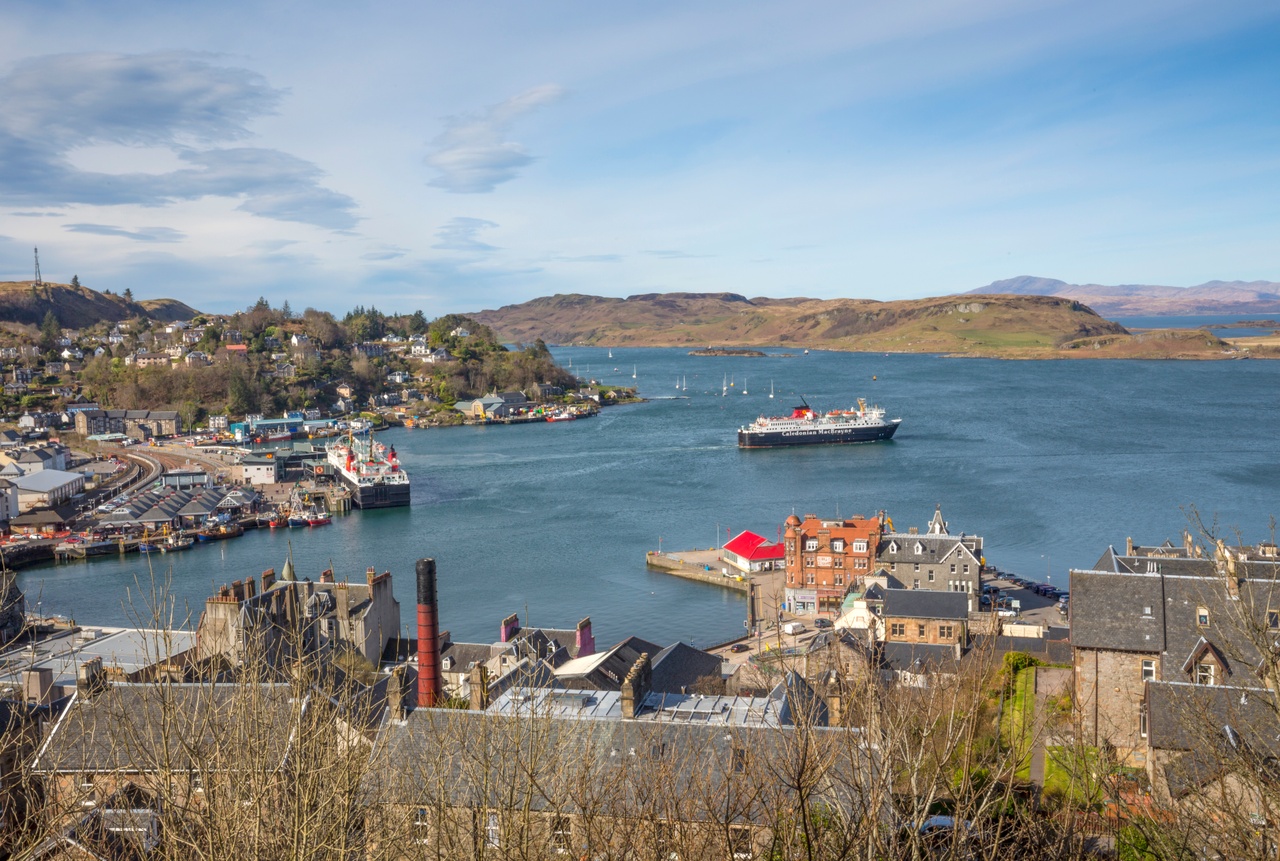
As much of the region is made up of islands, one of the main ways to get around is by the ferry which provides connectivity between islands and to the mainland.
The outdoors
Argyll and Bute is located on the west coast of Scotland. The region covers an area of 2667 square miles over 23 inhabited islands and part of the Scottish mainland. The region is well known as Scotland’s adventure coast. If you call this area home, you might want to spend your weekends bagging your first Munro (mountain over 3000 ft) with a walk up Ben Starav at the head of Loch Etive.
If hill walking isn’t your thing, not to worry, there are still plenty of other options. You can explore the miles of spectacular coastline along the Argyll Sea Kayak Trail or discover Argyll’s ‘secret coast’ on the stunning Cowal Way walking trail. With plenty of water sports options, this is one of the best ways to explore the coasts of the many surrounding islands.
Leisure
Argyll and Bute has seven National Nature Reserves and many more parks, gardens and wild spaces. This makes it one of the best places in Scotland to see iconic wildlife, including golden eagles, red deer, otters, seals, puffins, red squirrels, porpoises, and rare white-tailed sea eagles.
It’s one of Scotland’s five whisky producing regions, so there are lots of activities available if you enjoy a wee dram. You can discover the region’s ancient history, dark starry skies, wild landscapes and incredible local produce. You can also experience music, beer and food festivals throughout the year.
Find out more about the outdoors and leisure on VisitScotland.com
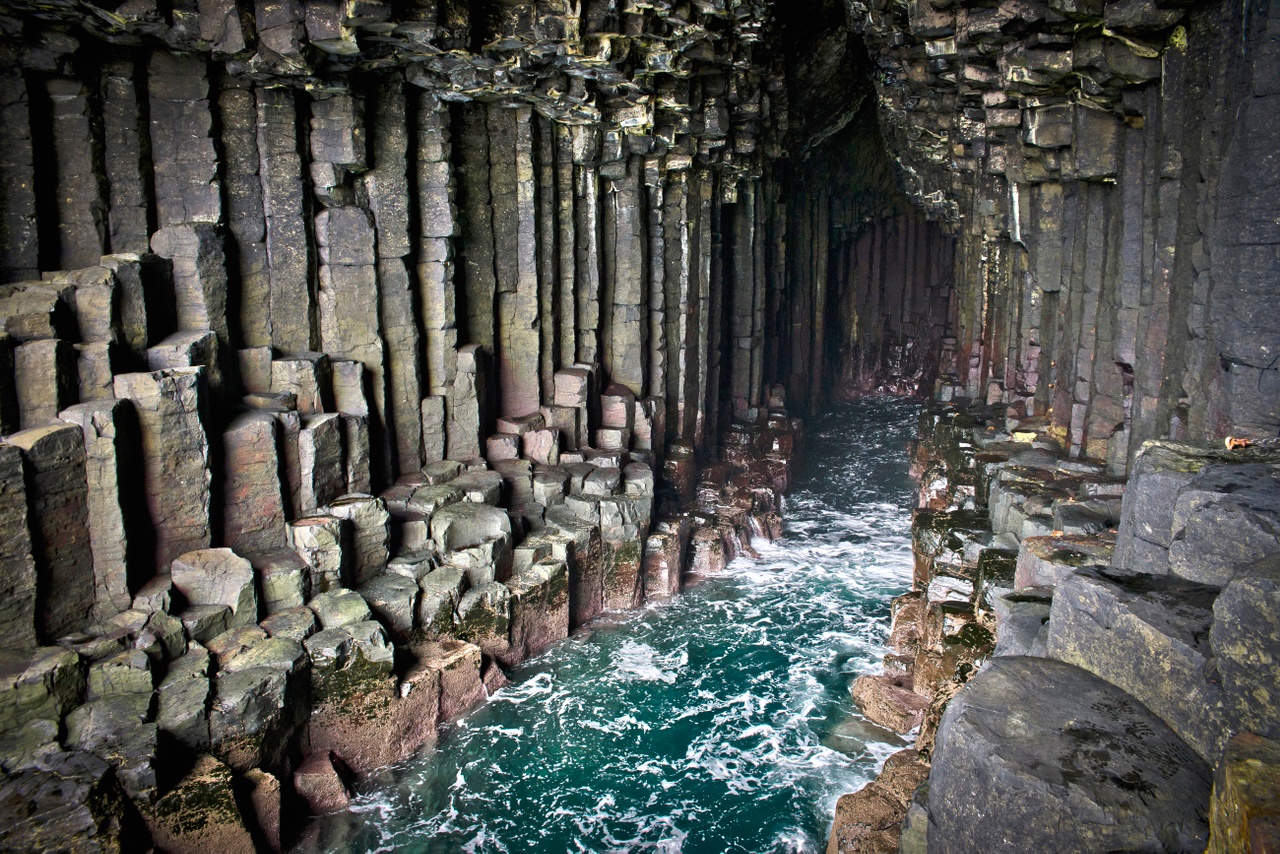
Accommodation
In the larger towns of this region, such as Campbeltown, Oban and Lochgilphead, you can find many of the same types of accommodation as you would in any popular city, but options and availability may be more limited than our cities. There are plenty of options in both houses, flats and larger areas of land.
In the more rural areas and on islands, housing may be more limited, but options will still be available.
Aberdeen and Aberdeenshire
Situated in northeast Scotland, the region is a global energy transition and innovation hub. With thriving sectors in tech, life sciences, food, world-class universities and stunning natural landscapes, it offers the best in life and opportunities. Live, work and grow in a region built for the future.
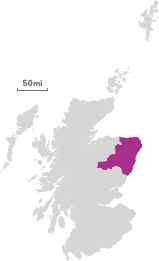
Population: 488,000
Fascinating facts
1. Aberdeen is famous for its sparkling granite buildings and monuments and is sometimes called the Granite City. It is home to the stunning Marischal College, the world’s second largest granite building.
2. The warming tones of 'Doric', the local Scots dialect can be heard across the region.
3. Astronomer and Aberdeen-born Sir David Gill (1843-1914) is credited with taking the first-ever photograph of the Moon.
4. Craigievar Castle in Aberdeenshire is believed to be one of the inspirations for Walt Disney’s fairy-tale castles.
Education
There are 226 schools across the region of Aberdeen and Aberdeenshire. In terms of colleges, the North East College has several campuses across Aberdeen City offering a huge variety of courses. The Scottish Agricultural College also has a campus in Aberdeenshire, offering a wide range of agricultural-based courses.
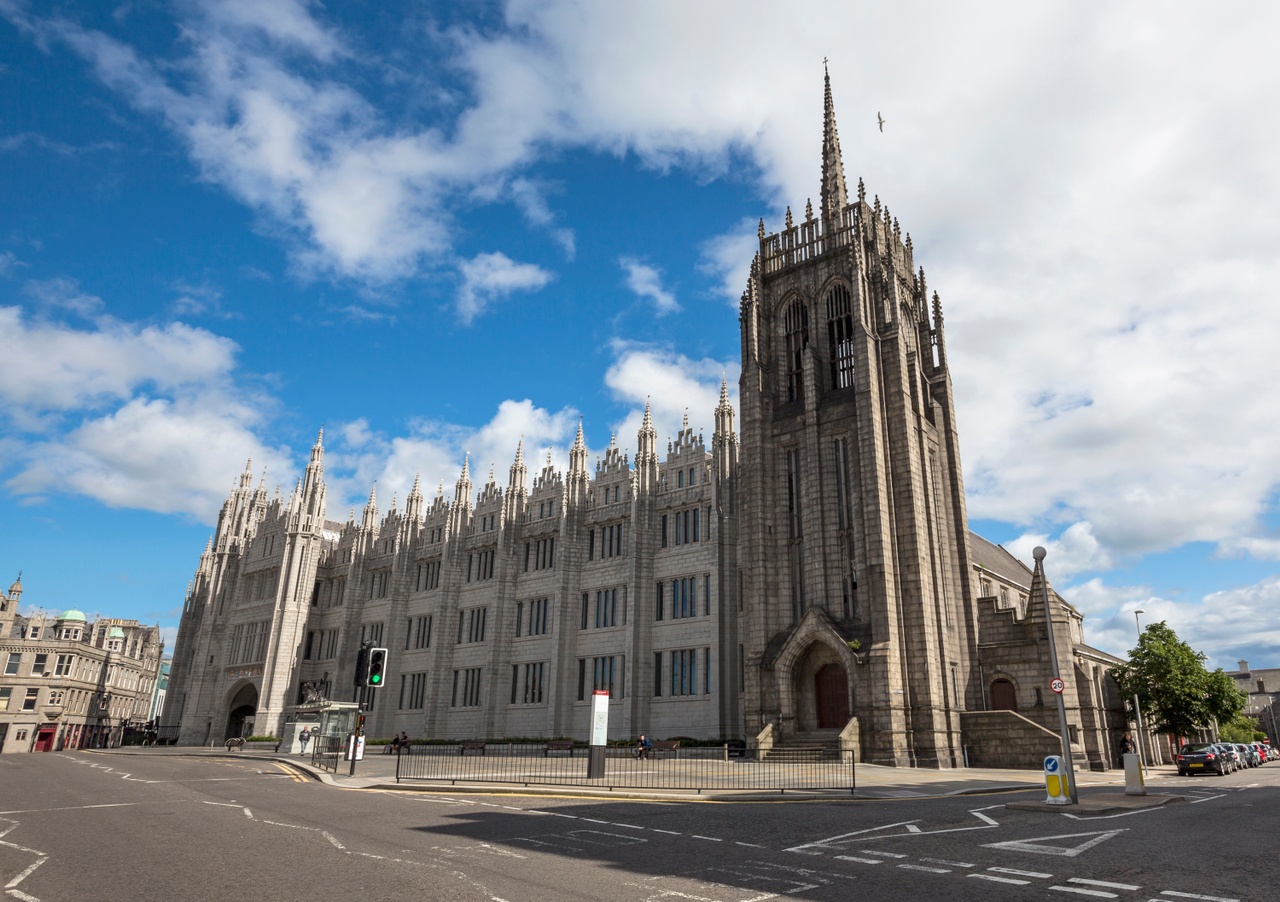
There are two universities in Aberdeen, the ancient University of Aberdeen (founded in 1495), and Robert Gordon University, a modern university referred to as RGU. Until 1858, there were as many universities in Aberdeen as the whole of England. The University of Aberdeen has been ranked as one of the 200 top universities in the world by the Times Higher Educational Supplement and RGU launched the UK’s first degree course in Artificial Intelligence and Robotics.
Find out more about schools and childcare in Scotland
Find out more about universities in Scotland
Local industries
Aberdeen, and its surrounding area, is a vibrant place for industry and lifestyle. It’s a leader in scaling innovation towards net zero with projects in offshore wind, hydrogen and carbon capture. Its key sectors include energy, digital technology, life sciences, and food and drink, supported by research institutes and universities.
The digital tech sector is rapidly expanding e.g. in EnergyTech, FinTech, ClimateTech, and AgriTech, supported by hubs like ONE Tech Hub. Life sciences and health tech excel through advanced research at Foresterhill Health Campus and the University of Aberdeen.
The food and drink sector is driven by globally renowned research and a strong agricultural industry with iconic local produce like Aberdeen Angus beef, whisky and North Sea seafood. There is also a growing agritourism sector across Aberdeenshire. Together, these industries form a diverse, resilient, and opportunity-rich economy—making Aberdeen a prime location for businesses and professionals looking to innovate, grow and lead.
Find out more about working in Scotland
Transport
Aberdeen and Aberdeenshire is well connected by road, rail, air and sea. Aberdeen International Airport offers flights and connections to over 45 destinations. With only an hour flying time to London or Amsterdam and Paris only another hour longer, Aberdeen is globally connected. The city has excellent rail and road links to the major cities in the UK and ferry services are available to both Orkney and the Shetland Islands. If you prefer to drive, Glasgow, Edinburgh and Inverness are only two and a half hours away by car.
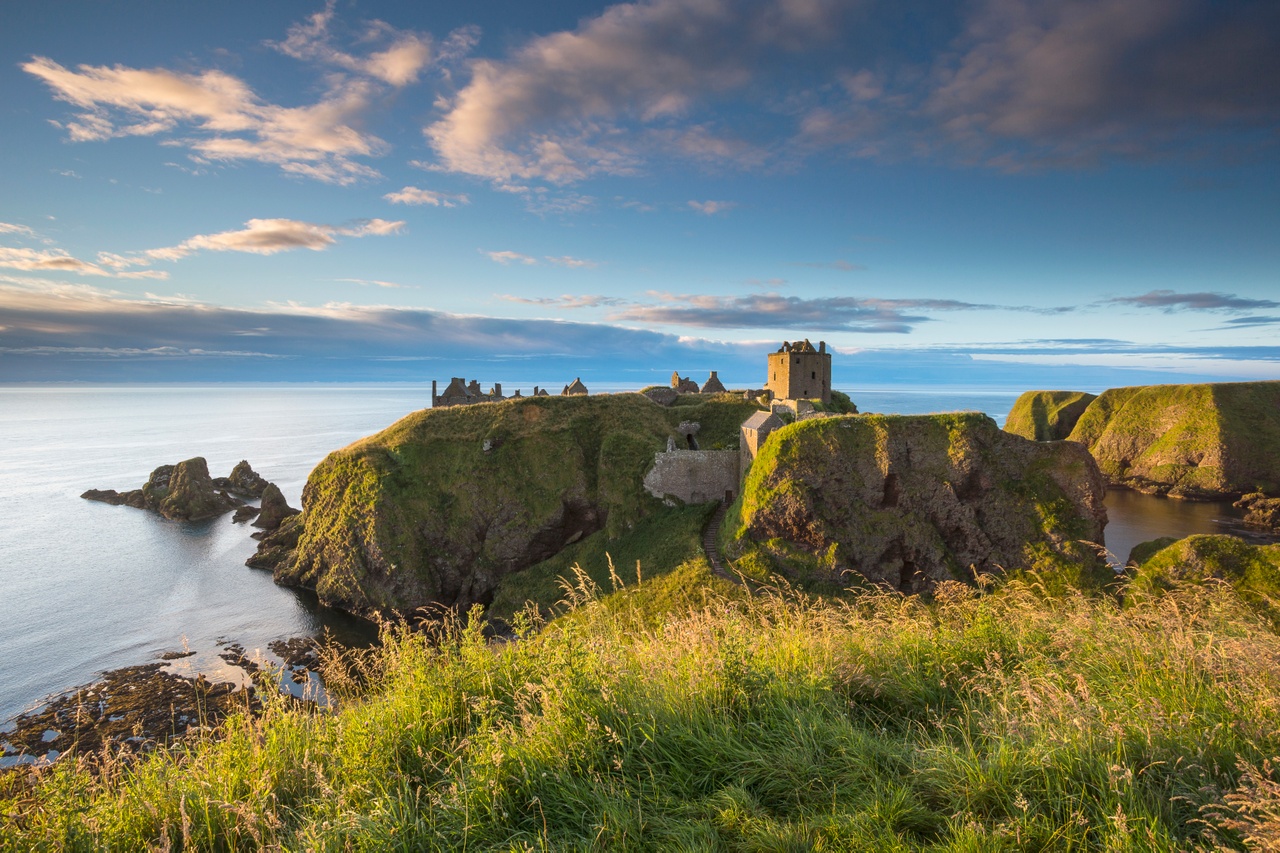
The outdoors
Cairngorms National Park in Aberdeenshire has five of the UK’s six highest mountains. The park is twice the size of the Lake District and features huge forests, waterfalls and abundant wildlife. There is plenty of green space in the city too – Aberdeen boasts 45 parks and gardens and is one of the few UK cities to have a beach. Aberdeenshire is a city of the sea and is also home to the world’s only castle trail, so you can spend your weekends exploring historic sites like the stunning Dunnottar Castle.
Leisure
Aberdeen has everything you would expect from a city in terms of leisure, with a huge choice of shops, restaurants and bars. Aberdeen is also home to His Majesty’s Theatre, The Music Hall, Lemon Tree and The Barn which host the biggest names in music, West End shows and comedy as well as up-and-coming local talent.
There are a variety of music venues including P&J Live that has hosted acts such as the Killers, Foo Fighters and Jay-Z.
If sport is more your thing, Aberdeen Sports Village offers a range of activities. It hosts international sports events, and has multiple sports facilities, including an IAAF (International Amateur Athletics Federation) accredited 400m athletics track and UKA (UK Athletics) accredited indoor athletics facility. It also has an Olympic standard Aquatics Centre, gym, exercise and lifestyle classes – the village offers a truly inspirational space for all.
Aberdeen also has their own professional football team, who are historically one of the most successful in Scottish football history and were once managed to European glory by Sir Alex Ferguson, before his success as Manchester United manager.
The region is ideal for outdoor adventure. From walking to mountain bike trails, idyllic road cycling and Munro Bagging, to paddleboarding and all winter sports, you’ll find your pace of outdoor adventure in Aberdeen and Aberdeenshire.
Find out more about Aberdeen and Aberdeenshire (visitscotland.com)
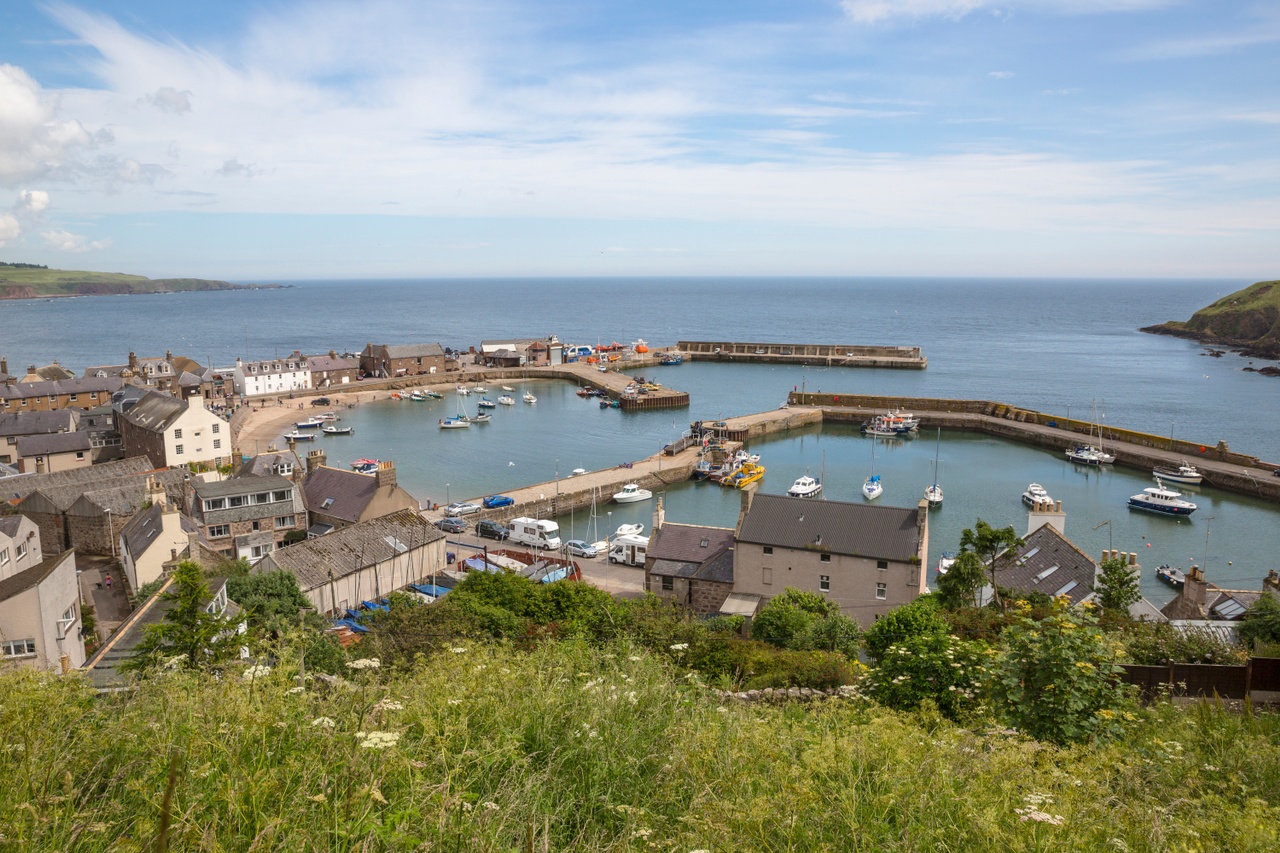
Accommodation
Aberdeen and Aberdeenshire have a broad housing market with a variety of properties for sale or rent. From traditional granite villas to modern developments and more, your choices are many. City suburbs like Cults or Peterculter are particularly popular with families from overseas because of their international school, beautiful surroundings and superior amenities. Other popular areas include the desirable residential areas of Inverurie and Westhill, and the bustling coastal market town of Stonehaven.
Edinburgh and The Lothians
Situated in east-central Scotland, this region is home to Scotland's capital city - Edinburgh - and has the perfect blend of vibrant city living, and wide-open green spaces to enjoy.
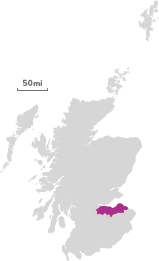
Population: 905,800
Five fascinating facts
| 1. Edinburgh is Scotland’s capital city and has been since way back in 1437, when it replaced Scone |
| 2. Edinburgh Castle is built on top of an extinct volcano |
| 3. Bass Rock, a tiny island off the coast of East Lothian, is home to the world’s largest colony of northern gannets |
| 4. Edinburgh was the first city in the world to have its own fire brigade |
| 5. Edinburgh Zoo is home to the world’s only knighted penguin – Sir Nils Olav is Colonel-in-Chief of the Norwegian King’s Guard |
Education
Edinburgh and the Lothians is home to 312 primary and secondary schools, meaning that no matter what part of this area you decide to call home, there is a nearby school. Included in this list is the famous Royal High School, which was founded in 1128 and is recognised as one of the oldest schools in the entire world. As well as this, the area also benefits from four universities, including the University of Edinburgh – one of the world’s most prestigious higher education institutions.
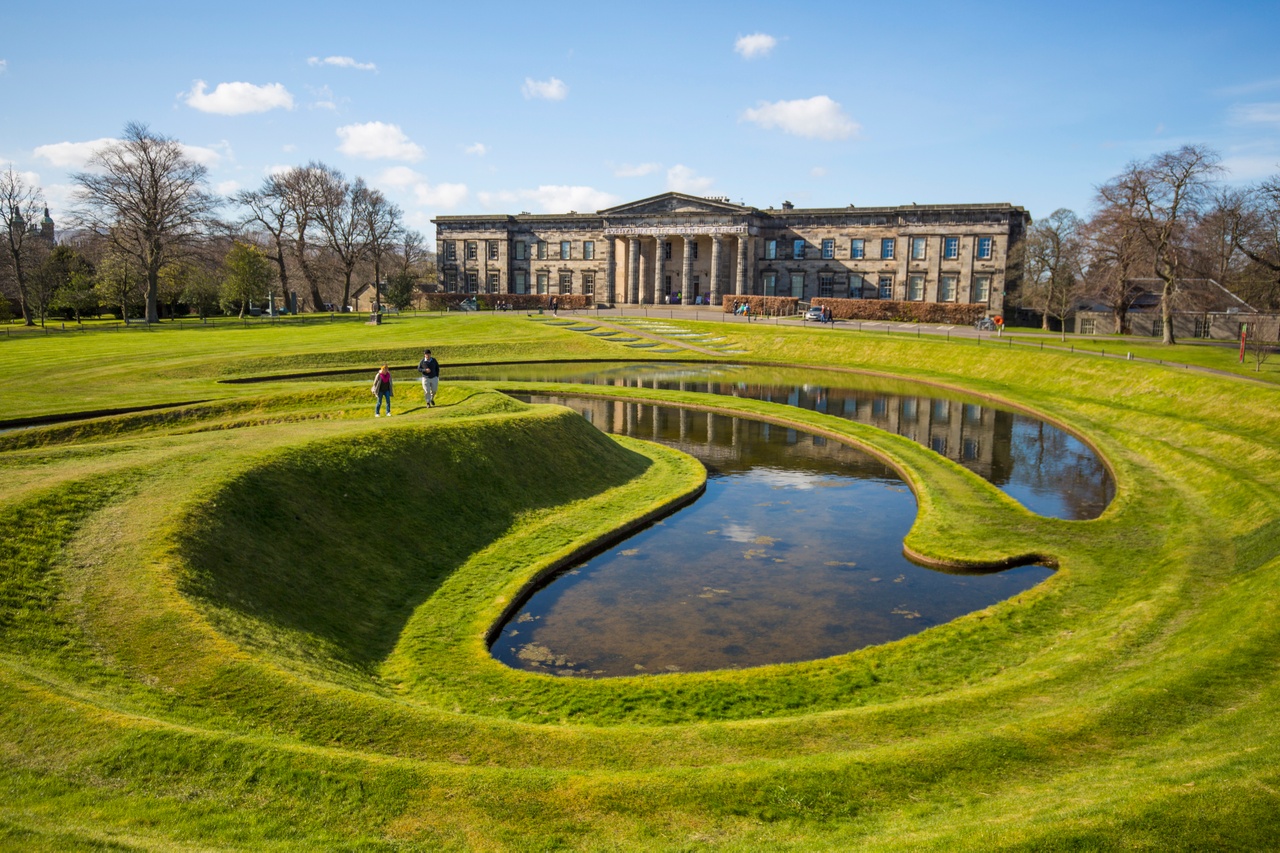
Find out more about the school system in Scotland
Find out more about universities in Scotland
Local industries
Banking has been a mainstay of the Edinburgh economy for more than 300 years, and this tradition continues today. The city is the largest financial centre in the UK after London and is home to the headquarters of some of the world’s biggest banks. Edinburgh also boasts the largest percentage of professionals in the entire UK, with 43% of residents holding a degree-level or professional qualification.
Edinburgh also benefits from a bustling technology and software industry and is home to CodeBase – the UK’s largest technology incubator. As home to the world’s largest arts festival, and the world’s first UNESCO City of Literature, creative industries are also huge in this region.
Find out more about working in Scotland
Transport
No matter how far you’re looking to go, or which mode of transport you’re looking to take, this region is very well serviced by public transport. Lothian Buses are the largest municipal bus company in the UK and operate almost 100 different routes and services throughout the area. The region also has excellent rail links and is home to the second largest train station in the UK – Waverly Train Station. Just outside the city, you will also find Edinburgh Airport – Scotland’s busiest airport – which offers travel to over 150 destinations around the world.
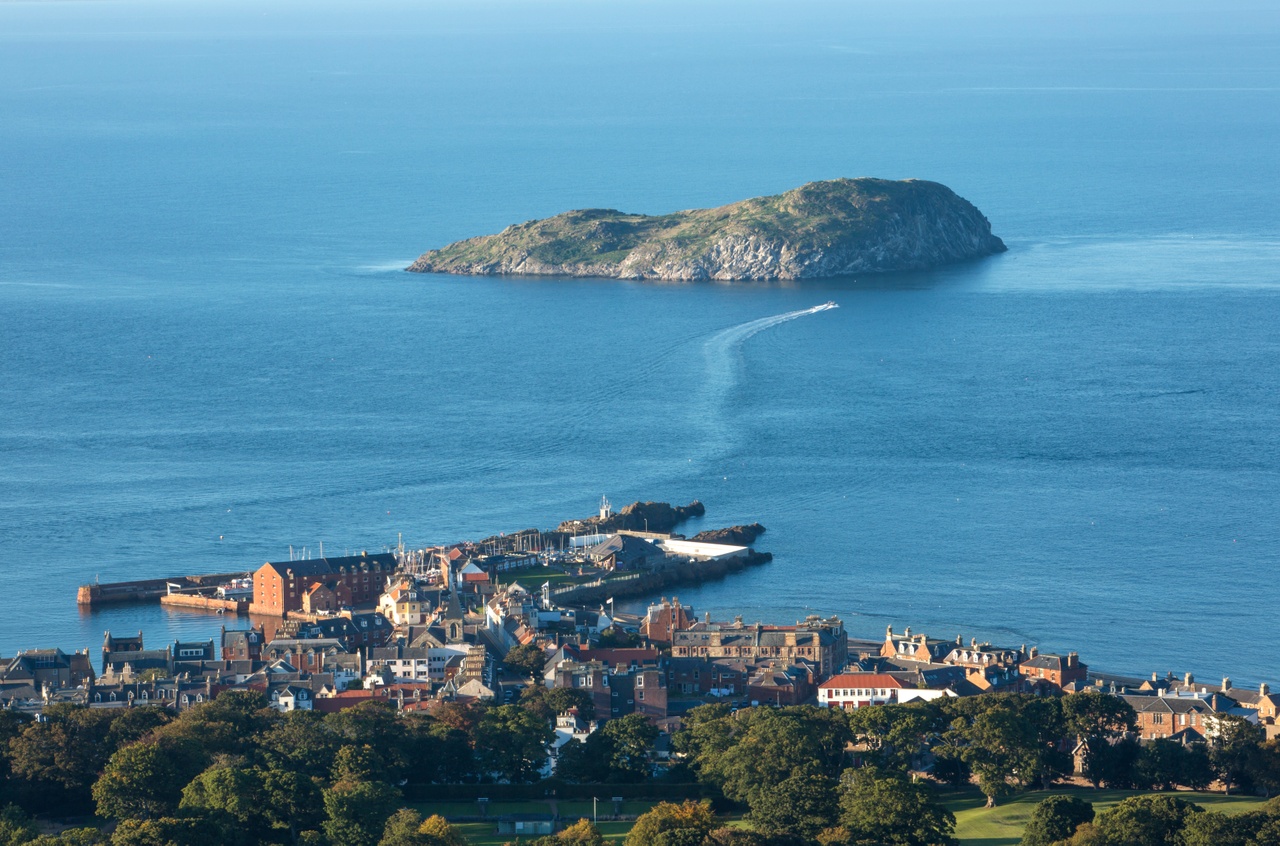
The outdoors
Just like the city of Rome, Edinburgh is built on seven hills, offering plenty of hiking opportunities. Almost 50% of Edinburgh is also designated as ‘green space’ and is home to a whopping 112 parks. Amazingly, the city of Edinburgh also has more trees per head of population than any other UK city.
Areas like the Meadows and Holyrood Park mean that you can experience beautifully scenic walks right in the heart of the city. On top of this, the surrounding Lothians are teeming with large woodland and parkland areas known as Country Parks – Vogrie, Beecraigs and Dalkeith – to name just a few.
Leisure
As with most capital cities, you can expect a huge range of leisure options throughout Edinburgh and the Lothians. Throughout the year, the city plays host to a range of exciting festivals, including the Edinburgh Festival Fringe – the largest arts festival in the world. As well as this, Edinburgh is also home to the National Museum of Scotland and a short drive east of the capital will take you to the town of East Fortune, which is home to the National Museum of Flight.
The region is also represented by three top-flight football clubs and is the home of the national rugby team – with their stadium also regularly playing host to some of the world’s biggest music acts.
Find out more about the outdoors and leisure on VisitScotland.com
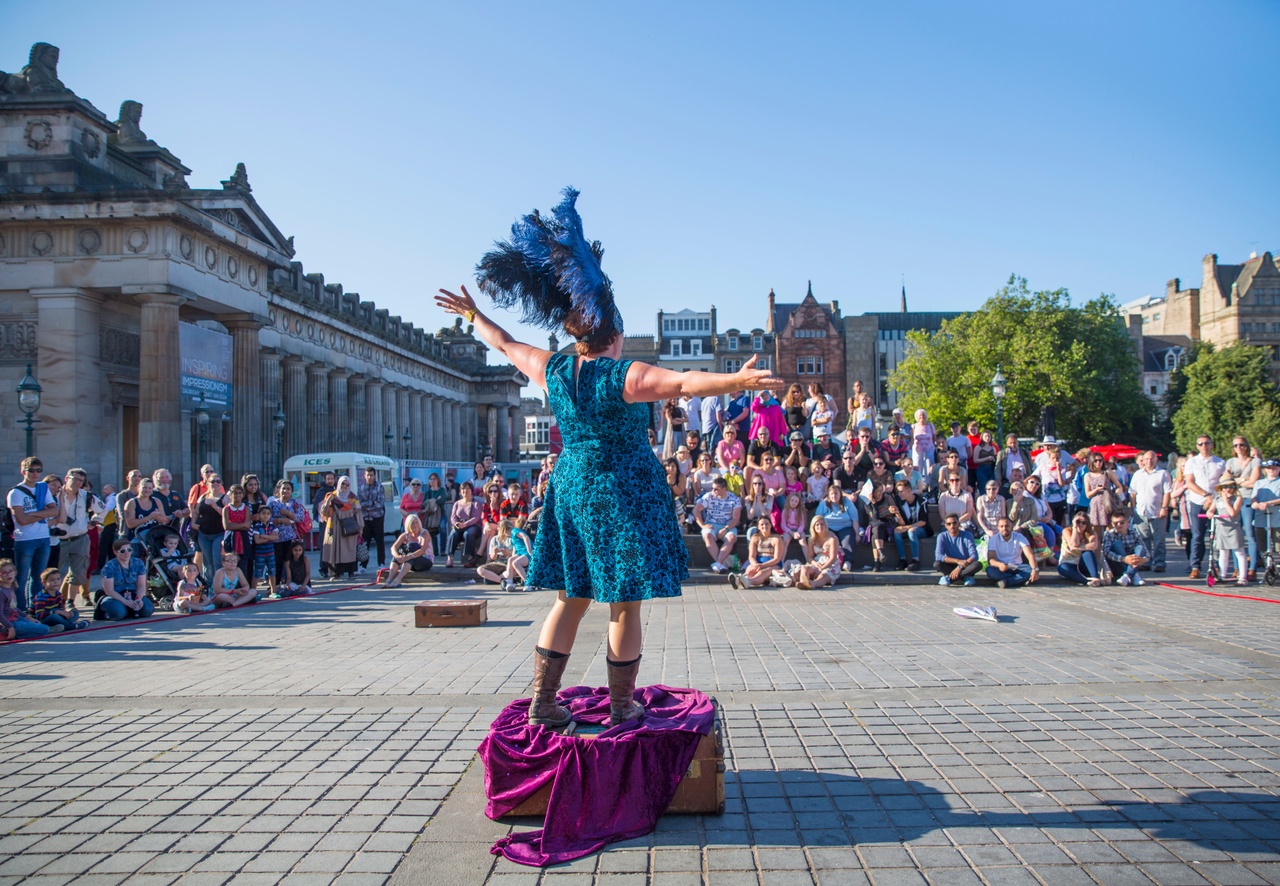
Accommodation
As with most major cities, the closer you live to the town centre, the more you can expect to pay. However, those excellent transport links mean that even if you choose to live in the surrounding areas, you’re only a short journey back into the heart of the capital.
The city has a massive range of housing types, from the traditional Victorian tenements of Edinburgh’s south side, to modern city centre living. Throughout the Lothians, there are a huge range of surrounding towns and villages such as Livingston, Bathgate, Dalkeith, Musselburgh and many more. All these come in many different shapes and sizes, meaning that whatever kind of environment you picture yourself living in, there are plenty options to choose from.